#subgenre: coda
Explore tagged Tumblr posts
Note
Do you know any Dystopias (as in fucked up futuristic high-tech society, not post-apocalypse) other than the Imposters Series by Scott Westerfeld, or An Unkindness of Ghosts by Rivers Solomon that heavily feature queer characters?
Yep, you can always find them here! https://lgbtqreads.com/sff/spec-fic-by-subgenre/ These all star queer characters, but if you want heaviest emphasis on queerer worlds, I'd say maybe start with Rainbow Islands and Chameleon Moon.
Cinderella is Dead by Kalynn Bayron
The Scorpion Rules by Erin Bow – B
The Culling by Steven dos Santos
Rainbow Islands by Devin Harnois – T
The Fever King by Victoria Lee
Proxy by Alex London
Lizard Radio by Pat Schmatz – NB
Coda by Emma Trevayne – B
Crier’s War by Nina Varela
Adult
X by Davey Davis
Upright Women Wanted by Sarah Gailey (Amz)
When You Were Pixels by Julio Alexi Genao
Firebreak by Nicole Kornher-Stace - A
Blackfish City by Sam J. Miller – L
Docile by K.M. Szpara
Chameleon Moon by RoAnna Sylver – A,L,T
30 notes
·
View notes
Text










Top New Misc Comic Releases for the Week of October 18th, 2023.
Beautiful Soldiers #1,
Bite Sized Tales of Terror #1,
Coda #2,
Cyberpunk 2077 XOXO #1,
Gargoyle by Moonlight #1,
Gargoyles Halloween Special #1,
Granite State Punk: Breaking Edge #1,
Hack Slash: Back to School #1,
Headless Horseman Halloween Annual #1 +
Subgenre #1.
1 note
·
View note
Text
THE 2022 AARONS - Best Film
75 films released in 2022 are eligible for this year’s ceremony. That ties a low with the pandemic year of 2020, but my goal was to focus on quality over quantity. Well, at least that’s what I told myself until I opted to watch Disenchanted over Decision to Leave. I did watch a lot of good films last year though. Here are the Aarons for Best Film:

#10. Scream
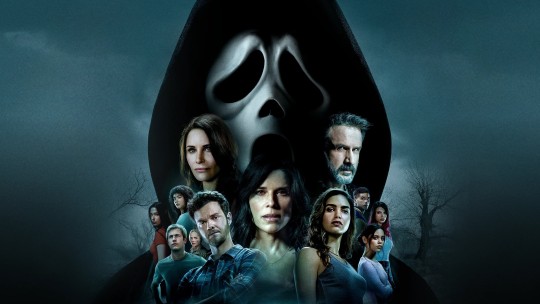
Ready or Not directors Matt Bettinelli-Olpin & Tyler Gillett were the first people brave enough to take a stab at Scream since the passing of director Wes Craven. They slayed at becoming its stewards. The fifth film’s satire has bigger prey in mind than just the slasher subgenre, cutting through a whole culture obsessed with reliving an idealized past. It’s a scary, and pertinent, reminder of how easily infantilized fan-bases can be weaponized against human beings, told with a sly style that would have made Craven proud. While the film features plenty of familiar faces and Ghostfaces, it’s the new blood of current and soon-to-be horror icons like Dylan Minnette and Jenny Ortega that really made the horror-comedy a scream.

#9. The Black Phone

Based on the short story by Joe Hill, The Black Phone recalls the best works of his father Stephen King. The 70s-set serial killer thriller grabs ahold of viewers with its supernatural hook - a phone that converses with the dead - but it’s the clever characters that will keep them captivated. Sinister director Scott Derickson slowly dials up the dread as young Finny Blake tries to escape the clutches of his kidnapper, with the looming specter of past victims making the cost of failure clear. The frightening film’s secret weapon is its resourcefulness, deftly deploying Ethan Hawke’s maniacal villain and eerie 8mm imagery as it lays the groundwork for an off-the-hook finale.

#8. The Batman

Since its debut, every comic book filmmaker has been riddled by the same dilemma: how to eclipse The Dark Knight. If director Matt Reeves, who sharpened his skill for thoughtful blockbusters on Planet of the Apes, didn’t solve the question, he at least gave a very good guess. Reeve’s reinvention pushed the envelope of superhero cinema by drawing inspiration from David Fincher, distinguishing itself in the competitive genre through grounded stakes and great spectacle. Abetted by Paul Dano’s riveting Riddler and Robert Pattison’s arresting, arrestedly-developed version of the vigilante, the twists and turns of the mystery noir keep viewers tightly-wound even after its dam breaks open.

#7. TÁR

TÁR’s composition is unusual: it begins with a full set of production credits, shown in reverse of traditional order. The switch-up is the opening salvo of a film fully intent on upsetting power dynamics. The three-hour character piece plays with audiences’ sympathies as it chronicles the collapse of famous (fictional) symphony composer Lydia Tár. The nuanced tale of narcissism takes some cues from modern day ‘cancel culture,” but the tenor is a tragedy as classical as they come. To alleviate trepidation, it’s important to note that TÁR isn’t as stuffy as it may sound: the coda of this unusual composition is a rollicking punchline as appropriate as it is unpredictable.

#6. Pearl

Pearl is a gem. Filmed in secret alongside its predecessor (more on that shortly) and released a few months later, the prequel extrapolates X into a compelling study of its eponymous character. The wickedness of the Oz-inspired technicolor terror contrasts itself through its singular focus. Tracing the lead-up to Pearl’s first string of murders in 1918 as her fairy tale dreams turn into a deranged fervor, the film keeps the body count going but the spotlight fixed on the incontestable star power of Mia Goth. Goth’s devotion to the demented ending guarantees that, while X is extricating, Pearl will always linger in the back of one’s mind.

#5. X

‘Elevated horror,’ the designation given to the recent trend of arthouse films, has routinely struggled to find the right balance between lofty thematic ambitions and expected genre titillation. X marks the spot. The trick was in fixating both on being unabashed about one’s nature. The thrust of Ti West’s throwback grindhouse flick, which documents a group of sexually-liberated filmmakers’ fateful encounter with an envious elderly couple, is a morality play about accepting mortality. The sexed-up slasher doesn’t skimp on penetrating flesh though, with gnarly gore effects designed by Wētā Workshop. It could have been objectifying and objectionable material, but West directs it all with a curious compassion; as a result, X multiplied wins for his films this year.

#4. The Banshees of Inisherin

Banshees is a lament of ghosting gone wrong. Martin McDonagh’s drama escalates an unconscientious uncoupling - truthful but tactless - between two life-long best friends to its most absurd and absurdly funny degree. Backdropped by the Irish Civil War, the boiling tension between the curiously incongruous but synchronously stubborn pairing of Brendan Gleeson’s ambitious Colm and Colin Farrell’s simplistic Pádraic highlights how quickly spite can erode one’s better angels. It’s a downbeat design yet Inisherin’s spirit lies in its impeccably witty dialogue. They may not be able to put their finger on whether it’s gaiety or grief, but audiences will be howling in response to Banshees for one reason or the other.

#3. Speak No Evil
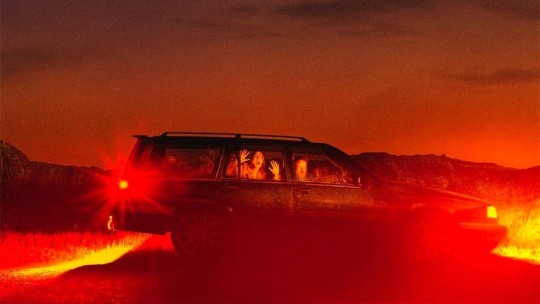
Much has been said recently about horror’s use as a vehicle to process past trauma; Speak No Evil returns the conversation to the genre’s custom of cautionary tales. Danger lies ahead, not behind, of the film’s family when they accept an invitation to an idyllic weekend stay with a foreign couple. Evil preys on the unprepared; the insidious nature of its terror isn’t clear until its trap is already sprung. For the unassertive, the Danish film is uniquely devastating. The less said to prospective viewers, the better, though rest assured that Speak No Evil deserves every good word.

#2. The Fabelmans
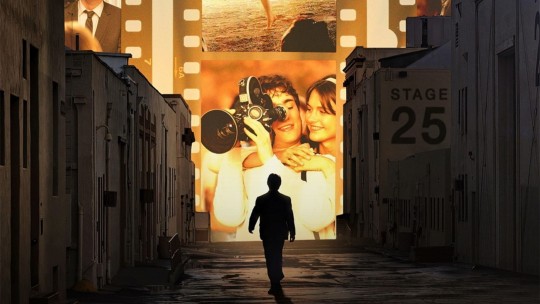
Steven Spielberg has spent a lifetime doing his dream work and capturing his audiences’ imagination along the way. Loosely based on his own childhood, The Fablemans brings that wide-ranging filmography into focus. The assortment of anecdotes is one of the director’s funniest films and undoubtedly his most vulnerable. While this semi-autobiographical story could have been a simple victory lap for the septuagenarian, Spielberg’s sentimentality has always been far wiser than critics claim. The sure to be sacred text to future generations of filmmakers is certainly a testament to the magic of movies. Yet, even as Spielberg reframes his past, the learned moral imparted by The Fabelmans is really about what cinema is unable to control.

AND THE BEST FILM OF 2022 IS...
#1. Everything Everywhere All At Once

Movie multiverses may be inescapable at the moment, but no project encapsulates the concept’s infinite possibilities more than Everything Everywhere All at Once. The revolutionary martial-arts flick runs like The Matrix trading its estrogen for ecstasy as it awakens an under-audit laundromat owner to the larger worlds around her. The film’s directors, collectively credited as Daniels, learned the tools of the trade on the offbeat Swiss Army Man and apply that same sense of humor here: one that’s lewd, ludicrous, and incredibly life affirming. Able to transform a universe of humans with hot dogs for fingers from joke to tearjerker and back again, the film is continually unexpected but everything one’s ever wanted all at once.

NEXT UP: THE 2022 AARONS FOR WORST FILM!
#film#TheAarons#TheAaronsFilm#TheAarons2022#best film#best picture#best of 2022#top 10#everything everywhere all at once#the fabelmans#speak no evil#the banshees of inisherin#x#pearl#tar#the batman#the black phone#scream
8 notes
·
View notes
Text
The complete list of films featured on this blog’s 2023 “31 Days of Oscar” marathon
Hello everyone,
Thank you once more for allowing me to present the annual marathon of Oscar-nominated films to your dashboards. This year, the films were grouped by genre or subgenre in primetime (5 PM Pacific into the night). This is the most exclusive period on this blog, as the selection of films that I can post and queue about is at its most limited. But at the same time, the blog is at its most accessible as this yearly marathon’s selection skew to more popular fare. I hope you enjoyed this year’s presentation of 31 Days of Oscar.
What follows is the exhaustive list of all 380 short- and feature-length films featured on this blog over the last thirty-one days for the 31 Days of Oscar marathon. This is down from last year’s record of 420. But that count remains only a fraction of the 5,019 films that have been nominated for Academy Awards since 1927.
Of those 380, 37 were short films (53 short films is the record, which was set last year). 343 were feature films.
BREAKDOWN BY DECADE 1927-1929: 6 1930s: 52 1940s: 53 1950s: 50 1960s: 37 1970s: 31 1980s: 25 1990s: 25 2000s: 27 2010s: 31 2020s: 50
TOTAL: 380
Year with most representation (2022 excluded): 1940 (11 films) Median year: 1967
Time for the list. 62 Best Picture winners and the one (and only) winner for Unique and Artistic Production that I featured this year are in bold. Asterisked (*) films are films I haven’t seen in their entirety as of the publishing of this post. Films primarily not in the English language are accompanied with their nation(s) of origin.
The ten Best Picture nominees for the 95th Academy Awards, including the winner, Everything Everywhere All at Once (2022)
The fifteen nominees in the short film categories for the 95th Academy Awards
The Adventures of Robin Hood (1938)
The African Queen (1951)
Aftersun (2022)*
Against All Odds (1984)*
Air Force One (1997)
Aladdin (1992)
All About My Mother (1999, Spain)*
All Quiet on the Western Front (1930)
All the President’s Men (1976)
American Graffiti (1973)
An American in Paris (1951)
The Americanization of Emily (1964)*
Anatomy of a Murder (1959)
Anna Christie (1930)*
Apollo 13 (1995)
Argentina, 1985 (2022, Argentina)
Around the World in 80 Days (1956)
The Artist (2011, France)
The Asphalt Jungle (1950)*
The Assassination of Jesse James by the Coward Robert Ford (2007)*
Auntie Mame (1958)
Avatar (2009)
Ayn Rand: A Sense of Life (1997)*
Balance (1989 short, West Germany)*
Bao (2018 short)
Barry Lyndon (1975)
Barton Fink (1991)*
The Battle of Midway (1942)
A Beautiful Mind (2001)
Becky Sharp (1935)*
Ben-Hur (1959)
The Best Years of Our Lives (1946)
Bicycle Thieves (1948, Italy)
The Big Sick (2017)*
Black Narcissus (1947)
Blackboard Jungle (1955)
BlacKkKlansman (2018)
Blazing Saddles (1974)
Block-Heads (1938)*
Blue Valentine (2010)*
Bonnie and Clyde (1967)
The Bourne Ultimatum (2007)
Boyz n the Hood (1991)*
Breaker Morant (1980)*
Breakfast at Tiffany’s (1961)
Bride of Frankenstein (1935)
Brief Encounter (1945)
Brigadoon (1954)
The Broadway Melody (1929)
Buena Vista Social Club (1999, Germany/Cuba)*
Caged (1950)
Carol (2015)*
Casablanca (1942)
The Cat Concerto (1946 short)
Catch Me If You Can (2002)*
Chicago (2002)
Chico and Rita (2010, Spain)
The Chronicles of Narnia: The Lion, the Witch and the Wardrobe (2005)
Cimarron (1931)
Cinema Paradiso (1988, Italy)
Cleopatra (1934)*
Close (2022, Belgium)*
Close Encounters of the Third Kind (1977)
Coco (2017)
CODA (2021)
Common Threads: Stories from the Quilt (1989)*
Cool Hand Luke (1967)
Creed (2015)
Crimson Tide (1995)
Crip Camp (2020)*
Crossfire (1947)
The Crowd (1928)
The Dam Keeper (2014 short)
The Danish Poet (2006 short, Norway/Canada)*
Dark Victory (1939)
Dawn of the Planet of the Apes (2014)
Days of Heaven (1978)*
Days of Wine and Roses (1962)
Dead Poets Society (1989)
The Deer Hunter (1978)
Dersu Uzala (1975, Soviet Union)
Designing Woman (1957)*
Dillinger (1945)*
Dirty Dancing (1987)*
The Divorcee (1930)*
Doctor Zhivago (1965)
Dog Day Afternoon (1975)
The Doorway to Hell (1930)*
Double Indemnity (1944)
Dr. Jekyll and Mr. Mouse (1947 short)
Dr. Strangelove or: How I Learned to Stop Worrying and Love the Bomb (1964)
Dumbo (1941)
The Earrings of Madame de... (1953, France)*
Easter Parade (1948)
Eat Drink Man Woman (1994, Taiwan)*
Educating Rita (1983)*
Elizabeth (1998)*
Elizabeth: The Golden Age (2007)*
Encanto (2021)
EO (2022, Poland)*
Erin Brockovich (2000)*
The Fallen Sparrow (1943)*
A Few Good Men (1991)*
Fiddler on the Roof (1971)
Fire of Love (2022)
The 5,000 Fingers of Dr. T (1953)
The Flame and the Arrow (1950)*
Flashdance (1983)*
Flowers and Trees (1932 short)
The Fog of War (2003)*
For Your Eyes Only (1981)
Foreign Correspondent (1940)
42nd Street (1933)
The 400 Blows (1959, France)
A Free Soul (1931)*
The French Connection (1971)
From Here to Eternity (1953)
Frozen (2013)
Fury (1936)
Gangs of New York (2002)*
Gaslight (1944)
The Gay Divorcee (1934)
Gerald McBoing-Boing (1950 short)*
Geronimo: An American Legend (1993)*
Get Out (2017)
Gigi (1958)
Glass Onion (2022)
The Godfather (1972)
The Godfather Part II (1974)
Going My Way (1944)
Gold Diggers of 1933 (1933)
Gold Diggers of 1937 (1937)*
Gone with the Wind (1939)
The Goodbye Girl (1977)*
Goodbye, Mr. Chips (1939)
A Grand Day Out (1989 short)*
Grand Hotel (1932)
Grand Illusion (1937, France)
The Grapes of Wrath (1940)
The Great Dictator (1940)
Great Expectations (1946)*
The Great Ziegfeld (1936)
Guillermo del Toro’s Pinocchio (2022)
Gulliver’s Travels (1939)
Hamlet (1996)
Heaven Can Wait (1943)
Heaven’s Gate (1980)*
Here Comes the Navy (1934)*
High Noon (1952)
Hoop Dreams (1994)
Howl’s Moving Castle (2004, Japan)
Hud (1963)*
The Hurt Locker (2008)
I Am a Fugitive from a Chain Gang (1932)
Imitation of Life (1959)
In Cold Blood (1967)
In the Heat of the Night (1967)
Incendies (2010, Canada)*
Independence Day (1996)
Inside Out (2015)
Into the Woods (2014)
The Irishman (2019)
It’s a Mad, Mad, Mad, Mad World (1963)*
It’s a Wonderful Life (1946)
Juno (2007)
The Killers (1946)
The King’s Speech (2010)
Kiss Me Kate (1953)*
Knives Out (2019)
Kung Fu Panda (2008)
La La Land (2016)
Lady Bird (2017)
The Lady Eve (1941)
Lady for a Day (1933)*
Lagaan (2001, India)*
The Last Command (1928)*
The Last Emperor (1987)
The Last Temptation of Christ (1988)*
Lawrence of Arabia (1962)
The Lavender Hill Mob (1951)*
The Leopard (1963, Italy)
The Letter (1940)
Libeled Lady (1936)*
Licorice Pizza (2021)
Life with Father (1947)
Lincoln (2012)
Little Caesar (1931)
Little Johnny Jet (1953 short)*
Little Miss Sunshine (2006)
A Little Romance (1979)
Little Women (1933)*
Living (2022)
The Lord of the Rings: The Fellowship of the Ring (2001)
The Lord of the Rings: The Return of the King (2003)
The Lord of the Rings: The Two Towers (2002)
Lost in Translation (2003)*
The Magnificent Ambersons (1942)
Magnificent Obsession (1954)
Malcolm X (1992)
A Man for All Seasons (1966)
The Man Who Knew Too Much (1956)
The Man with the Golden Arm (1956)
Marcel the Shell with Shoes On (2022)
Marty (1955)
Mary Poppins (1964)
Master and Commander: The Far Side of the World (2003)*
The Matrix (1999)
McCabe & Mrs. Miller (1971)*
Meet Me in St. Louis (1944)
Mighty Joe Young (1949)
A Mighty Wind (2003)
Mildred Pierce (1945)
Minari (2020)
The Mission (1986)*
Mon Oncle (1958, France)
Monsieur Hulot’s Holiday (1953, France)
A Morning Stroll (2011 short)
Moonraker (1979)
Moonstruck (1987)*
Mr. Deeds Goes to Town (1936)
Mrs. Miniver (1942)
Murder on the Orient Express (1974)*
The Music Man (1962)
Mutiny on the Bounty (1935)
My Favorite Wife (1940)
My Life as a Dog (1985, Sweden)
Network (1976)
Nicholas and Alexandra (1971)*
The Night Before Christmas (1941 short)
Night Must Fall (1937)*
Nightmare Alley (1947)
Ninotchka (1939)
Now Hear This (1962 short)*
Now, Voyager (1942)
The Nun’s Story (1959)
Oliver! (1968)
Once Upon a Time in Hollywood (2019)
One Night in Miami... (2020)*
One Way Passage (1932)*
Our Town (1940)
The Ox-Bow Incident (1941)
The Paper Chase (1973)
Patton (1970)
Peace on Earth (1939 short)
Peyton Place (1957)*
The Philadelphia Story (1940)
Pillow Talk (1959)
Pretty Woman (1990)*
The Pride of the Yankees (1942)
The Prime of Miss Jean Brodie (1969)
The Prisoner of Zenda (1937)
Prisoners (2013)*
The Producers (1967)
Psycho (1960)
The Public Enemy (1931)
Puss in Boots: The Last Wish (2022)
The Queen of Basketball (2021 short)
The Quiet Girl (2022, Ireland)
Quo Vadis (1951)
Raiders of the Lost Ark (1981)
Raintree County (1955)*
Ran (1985, Japan)
Random Harvest (1942)
Raya and the Last Dragon (2021)
Rebecca (1940)
Rise of the Planet of the Apes (2011)
Robin Hood (1973)
Robinson Crusoe (1952)*
Rocky (1976)
Royal Wedding (1951)
RRR (2022, India)*
Saving Private Ryan (1998)
Schindler’s List (1993)
The Sea Beast (2022)
The Sea Hawk (1940)
The Sea Wolf (1941)*
The Secret of Kells (2009)
The Shape of Water (2017)
Shaft (1971)
The Shawshank Redemption (1994)
She Done Him Wrong (1933)*
Ship of Fools (1965)*
The Sin of Madelon Claudet (1931)
Singin’ in the Rain (1952)
The Sky’s the Limit (1943)*
Sleeping Beauty (1959)
Snow White and the Seven Dwarfs (1937)
The Snowman (1982 short)*
Some Like It Hot (1959)
The Sound of Music (1965)
Spartacus (1960)
Spotlight (2015)
Stagecoach (1939)
Stand by Me (1986)
A Star is Born (1937)
Stella Dallas (1937)
The Sting (1973)
The Story of G.I. Joe (1945)*
The Story of Three Loves (1953)*
La Strada (1954, Italy)
A Streetcar Named Desire (1951)
Strike Up the Band (1940)
Sunrise: A Song of Two Humans (1927)
Swing Time (1936)
The Sword in the Stone (1963)
Superman (1941 short)
The Tale of Cinderella Penguin (1981 short)*
The Tale of the Princess Kaguya (2013, Japan)
Tango, no me dejes nunca (1998, Argentina)*
Teacher’s Pet (1958)*
Tess (1979)*
That Obscure Object of Desire (1977, Spain)*
That Uncertain Feeling (1941)*
The Thin Man (1934)
The Third Man (1949)
Three Coins in the Fountain (1954)*
Three Colors: Red (1994, Poland)
Three Little Pigs (1933 short)
The Time Machine (1960)
The Tin Drum (1979, West Germany)*
Titanic (1997)
To Catch a Thief (1955)
To Kill a Mockingbird (1962)
Tom Jones (1963)
Top Gun (1986)
The Tortoise and the Hare (1934 short)
Travels with My Aunt (1972)*
The Triplets of Belleville (2003, France)*
True Grit (1969)
True Grit (2010)
Tsotsi (2005, South Africa)*
Twelve Angry Men (1957)
2001: A Space Odyssey (1968)
Turning Red (2022)
The Umbrellas of Cherbourg (1964, France)
Vertigo (1958)
Victory Through Air Power (1943)*
Wait Until Dark (1967)*
War and Peace (1966, Soviet Union)*
War for the Planet of the Apes (2017)
The Way We Were (1973)*
West Side Story (2021)
The Westerner (1940)
The Whale (2022)
What Ever Happened to Baby Jane? (1962)
What Price Hollywood? (1932)
When Worlds Collide (1951)
White Heat (1949)
White Shadows in the South Seas (1928)*
Who Framed Roger Rabbit (1988)
Who’s Afraid of Virginia Woolf? (1966)
The Windshield Wiper (2021 short)
Wings (1927)
Winnie the Pooh and the Blustery Day (1968 short)
Witness for the Prosecution (1957)
The Wizard of Oz (1939)
Woman in the Dunes (1964, Japan)*
Wuthering Heights (1939)*
Yankee Doodle Dandy (1942)
The Year of Living Dangerously (1982)*
You Can’t Take It with You (1938)
Young Bess (1953)*
3 notes
·
View notes
Note
📌✨ hi coda!!
hi emily!!!!!!! n_nthanks for sending an ask!! I hope youre having a good day : )
✨ what draws you towards your hyperfixation? what is interesting about it?
like i mentioned in the last ask i honestly have always felt like petscop is like, perfectly tailored to me . it covers a subject matter that is really really important to me and resonates with my lived experiences, and it's presented in such a way that it aligns perfectly with all of my favorite framing devices in media!!! it's got the whole melty reality thing going on, it's (on the surface level) a "creepy gaming ARG" (ITS NOT ACTUALLY AN ARG IT JUST POSITS ITSELF AS ONE DONT THROW ROCKS AT ME) which has been a weird internet subgenre ive been fascinated with since childhood, it's psychological fridge horror, distinctive visuals, metaphors about post traumatic stress posited through technology, its like, so disgustingly codacore that sometimes i genuinely cant believe it really exists. i have like weekly moments where im like. petscop is real?
i think the most interesting thing about it to me is the amount you can take away from it and how much depth there is despite its relatively short runtime, and also how the purposeful ambiguity allows for everyone who watches it to walk away with a different set of conclusions and feelings about what happened. i'm fascinated with the storytelling mechanisms that allow for it to act as such a mirror to the viewer. i love trying to pull apart how the thing works and how it manages to fit so much into so little explicit representation of the actual literal events of the story. its so cool to me!!!!!!! guys i kind of like this stroy. just like a little
#THANK YOU sorryI ramble when im talking about it . but For real i get the like#this is MY story. it was made for ME feeling a lot#which is super fuckin weird. Like why is this so full of everything i love and value in artwork...uhhhhhhh..pretty strange...
3 notes
·
View notes
Text
2020 Year in Fic (and art)
Like many people, the pandemic reordered my world - both personal and professional. Despite all that, and the emotional energy spent on this awful, nail-biting election year in the United States, I did actually publish a few stories.

I only published two longer stories this year, opting out of writing for any bangs as I had very few spoons (or time) available.
Hope is a Living Thing I don’t usually go for Endverse stories. They make me melancholy and often ache over broken Dean and Cas - without much in the way of hope. When I was asked to write Endverse for a giveaway, I couldn’t help but sprinkle in some hope. This was published on New Year’s so it was clearly written in 2019. I don’t care, though! I’m counting it.
And They Were Ghostmates Like most of my stories, this one came about because I made a dumb joke in a text thread, and liked it so much that I wrote a story about it. My contribution to the quarantine fic subgenre.
Season 15 Codas
LOL, remember when I was going to write a code for every episode of season 15? Reader, I did not.
Fine Coda for 15x6 Golden Time. Cas rents a cabin and ruminates on emotions.
Maybe I’m Amazed Coda for 15x9 The Trap. A little Sam/Eileen, a little Dean/Cas.
Dancing Cheek to Cheek Coda for 15x10 The Heroes Journey. Dean and Cas dance together.
Devotional Coda for 15x17 and 15x18 Despair and Unity. A series of vignettes exploring Castiel and Dean's past
Limitless Coda for 15x19 Inherit the Earth. Thinking about human Cas, and God Jack.
There’s Something About Jenny Coda for 15x20 Carry On. Remember that trash fire??? Hahahahaha (weeps). I knew there had to be a reason Jenny showed up in the finale. Turns out, it was dark time travel magic and it IS reversible!
Art
While I didn’t write for any challenges, I did contribute art to a few projects:
Art for Missing Art created for Kitmistry's story, Missing, which was written for the DeanCas Pinefest 2020
Art for The Elmwood Haunting Art created for Sarasaurusrex's story, The Elmwood Haunting, which was written for the DCBB 2020
Art for Ode to Squirrel World I begged my friend to write this, and promised squirrel art. It brings me joy.
Creatively, I’d rank 2020 as a middling year. I created more than I did during a massive dry spell, but less than recent years. Here’s to a calmer 2021. Hopefully I can inject a little more beauty into the world than I managed this year!
15 notes
·
View notes
Note
Hey Betts, someone asked me to have my work be part of their collection in ao3? Since you have been in ao3 for a while, I thought it would be okay to ask you what that means?
sure! great question. collections are an under-utilized feature of ao3, which is why i think they’re kind of a mysterious beast.
ao3 is a unique archival platform, in that the archive work is done by users and a team of moderators, rather than administrators who either archive the work themselves (which would be a nightmare) or restricting the archiving options (like if we only had a few hundred tags to choose from), which is to say, when you post a fic to ao3, you tag it yourself.
this has a lot of upsides (obvs, since the archive is so successful and effective), but one of the downsides is that a content creator may suck at archiving their fic. most writers abide by fanfic etiquette, but some don’t, and the ToS is pretty hands-off in that regard (the ToS say you need an archive warning, basically, and that warning needs to be accurate if it’s not CNTW. you don’t have to rate it or tag the ship or anything else. you’re even allowed to tag the wrong ship and wrong fandom, and the abuse team won’t take it down or fix your tags).
so if the writer doesn’t properly tag the fic, and the abuse team/tag wranglers won’t properly archive fic based on the content (but they will wrangle your tags and uphold the ToS), that leaves readers.
ao3 built in features so that users could archive fic properly, so it can be found more easily, namely via collections and bookmarks, both of which are woefully undervalued as resources, and i wish, along with a few other features, they were more prevalent, because i think they’re brilliant.
collections have multiple functions. first, part of the work of the OTW is to import fics from other, older archives to the ao3. collections allow a central hub for those archives. one example is the Master Apprentice collection, which was an old archive for Obi-Wan Kenobi/Qui-Gon Jinn fics. this is also why you sometimes see fics dated earlier than 2008, when the archive was built.
another use of collections is to host prompt-fill memes (like kinkmemes), big bangs, or gift exchanges (like yuletide). this way, all the fics written for a certain event are located in a central space, and therefore easier to browse and find what you’re looking to read.
finally, getting to your question, a user can make their own collection and put fics into it so that other readers can find fics of a certain type more easily, especially if those fics are notoriously poorly tagged (codas) and/or for whatever reason the archive’s structure obscures the ability to find them. take, for example, Jaime/Cersei fics. in most fics, if J/C is tagged, it’s a secondary or background pairing, and there’s no way to separate “this fic’s primary pairing is J/C” from “this fic has J/C in it.” so a user can create a collection of primary-pairing J/C fics so that other shippers have easier access to them, instead of scrolling through hundreds or even thousands of fics in which J/C is used as a warning tag rather than a content tag.
other popular collection themes are good smut, fix-its and codas (which are poorly tagged because many writers don’t look up the episode tagging style conventions, which is “Episode: sXX eXX Episode Title”), and fic subgenres like recovery bucky fics.
the way the archive manages this feature is by allowing readers to automatically place fics in collections, and the author can remove their fic from the collection by going back in and editing the fic. so if, for whatever reason, you do NOT want your 30k fluff fest fic in a collection of “my favorite porn,” you can click Edit and remove the collection from the list. if you choose to keep your fic in the collection, the collection will be listed on the fic, so readers can find other, similar fics.
the only collection i’ve ever seen that i did not want my fic to be part of was one whose description used grossly pretentious rhetoric that seemed completely antithetical to the spirit of fic. also, someone “accidentally” added one of my fics to the Anonymous collection, which as you might know, anonymizes the fic entirely.
in the same vein as collections (i know you didn’t ask, but at this point i’m just begging people to use these features), users can “fix” poorly or under-tagged fics via bookmark. let’s say you’ve read a fic that’s 100k+ and has a billion kinks in it, and the author chose not to tag every single kink (which, fair). you, the reader, are maybe invested in archiving clothes sharing fics. you can bookmark the fic and tag it “clothes sharing” and a user can then search bookmark tags to find this specific subgenre of fic that isn’t often tagged because of how ubiquitous it is, or sometimes not even seen as a kink or trope.
you might be thinking, but why would i search bookmark tags? nobody uses bookmark tags. BUT LET ME TELL YOU, if people did bookmark more thoroughly, like back in ye olden days when we used del.icio.us, the archive would be that much more functional and efficient.
so please, fic readers, i know you are constantly begged for comments and reblogs and all that, but if you have time or energy, or find interacting with authors anxiety inducing and want to help out in some other way, you can do other things to help out and preserve our genre. make collections. bookmark thoroughly. use the amazing features so lovingly offered to us.
(one thing i didn’t mention is that i wish users would fill out their profiles more thoroughly, because author history preservation is just as important as fic preservation, but that’s maybe a rant for another time.)
tagging experts @naryrising and @ao3commentoftheday if they have anything to add/correct!
495 notes
·
View notes
Text
Haptic Narratives: The Absurdly R EA L Artifacts of Dale Brett / / / [part 2]

[D]: Lately though, most of my influence has come from other forms of media opposed to writing. I have found the more I write, the less I read – at least long form. Music, animated series/films - both Japanese anime and stuff like Adult Swim and internet culture - all of these things come through in my work.

[W]: Music.
[D]: Definitely music. I often try to write with a type of musical style I enjoy in mind. This is, believe it or not, one of the reasons I decided to re-commence writing fiction. I was sick and tired of googling combinations of "vaporwave + fiction + dream" or "shoegaze + literature + drugs" to try and find works that fit a certain aesthetic that did not exist. So why not create them myself? For instance, ambient and to a lesser extent dreampunk, would be the genres I was trying to build on in Faceless in Nippon. With Ultraviolet Torus it is no secret that it is my shoegaze project. As you know with our mall collaboration [cloud mall and maze/mall], this will be vaporwave-heavy in aesthetic and theme. I think these musical styles also take me right back to the original interests that I have garnered from literature: how to feel and express oneself in light of the consumerist dream, how to find meaning in the face of a constant blurring reality. I want to produce words that create a sensory experience. Words to touch your skin, words to make you see refracted colours, words to make you realise life sucks but it's all okay.
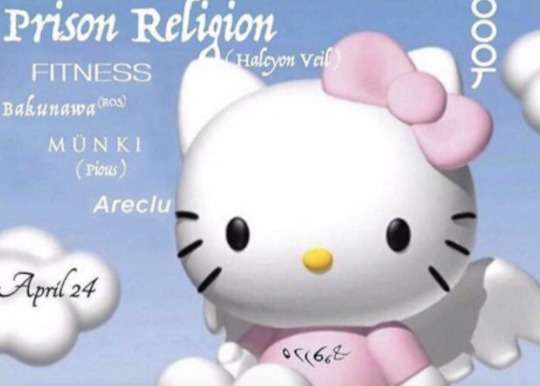
[W]: Aesthetics are important to me as well. The depth of the surface. The synthetic, simulacra. I suspect any "honest" portrayal of our day-to-day life, even a so-called "realist" presentation, would be sci-fi, at least in part. The kitchen-sink realism of today would include game realities and all sorts of "tropes" – or what one used to call tropes – of sci-fi. DeLillo’s White Noise is a big work for me, related to some of the consumerist themes. The three layers you refer to are impressive – you've put a lot of thought into where your work comes from, what it's shaped by. I've never thought in those terms really. Although "Pessoan cyberpunk nihilism" as a blurb would have me buying whatever that book is. Abe's The Box Man - I read that in I think 2015 or so. I see Abe's tone in some of your prose. That is a hard tone to tap. It's soft and dislocated. Requires a gentle hand, and a kind of amorphous thought process. In recent years I've taken influence more from video games and commercials and music than anything textual. I assumed your influences now were primarily visual. Graphic novels, anime, bad TV movies - I cull more from kitsch than I do from literature now. Would you tell me a bit about your time in Japan? And how would you describe Faceless in Nippon to a reader who knows literally nothing about it?

[W]: I relate very hard to your not being able to google, say, "vaporwave + dream + fiction" and get a hit. You had to create your hits. I feel the same way. It's like I want "Borges + USA Up All Night" or something similarly niche and not-quite-available-elsewhere. The established subgenres you mention, like dreampunk, are still these largely unexplored parks of the mind. There aren't a whole lot of titles. Do you view Faceless in Nippon as your first book and Ultraviolet Torus as a sophomore effort?
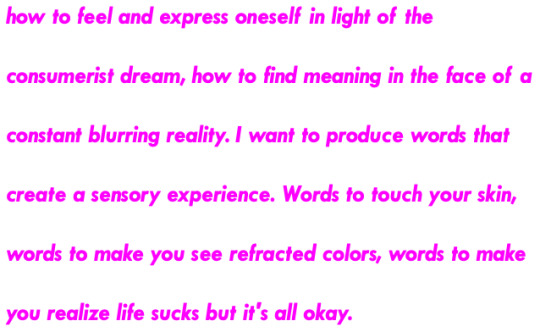
[W]: One aspect of your work that struck me right away is its sensory nature, and its desire to make complex emotions like melancholy or lostness more tangible or tactile.
[Ed.: racetams with caffeine are ingested.]

[D]: I really like your description – “the depth of the surface.” This really fits what I’m trying to achieve with writing. I try to attain a certain sensory experience with abstract imagery, but endeavor to maintain a somewhat conventional narrative or “everyday” story underneath. For instance, Faceless in Nippon was always meant to mimic the feeling of floating in/on water, gently bobbing through society’s ambient capitalist waters attempting to find a purpose. This incorporeal imagery juxtaposed with the more straightforward vignette format and story arc of a young western male living abroad. With Ultraviolet Torus, the prose and format are more unconventional – it was designed to mimic gemstone/mineral structure and shoegaze music, with the narrative underpinning the imagery taking the form of the rise and fall of a standard relationship. I agree that even a “realist” presentation is somewhat sci-fi these days – it is unavoidable. Our friend, contemporary, and collaborator James Krendel-Clark and I have often spoken about how the only thing left for sci-fi is this almost meta-sci-fi angle, where all the tropes have become so cliché and ingrained that really any attempt at sincere “world building” is futile. It’s better to experiment in syntax and delve into what another contemporary of ours, Nick Greer, likes to call “hyper-genre”. Use the tropes, but explore them linguistically, see what they do for the reader sensorily, opposed to using them as the building blocks to create another mundane genre narrative. I have certainly done that in shorter form through the Concentric Circuits: CODA stuff on Surfaces. I think my sci-fi influence comes through in both Faceless in Nippon and Ultraviolet Torus, certainly in the way that I frame the setting or landscape as a character almost, similar to how Ballard and Gibson craft their prose. I have had a lot of time to think about the aforementioned literary influences. I am slightly OCD too, so I often create these massive lists and Venn diagrams and shit of artists/works with certain styles and aesthetics that overlap. I do like to think of myself as a modern-day Walter Benjamin in the way I compile notes and lists and memories that form the basis of my artistic and existential exploration. I think Benjamin would have had a hell of a time with the notes app of a smart phone.

[D]: Regarding Kobo Abe, you are correct, certainly not an easy tone to master, and one that I definitely have not. My writing is not as sound as a master like Abe, which I think is why I subconsciously fall back on the sci-fi landscape syntax/prose mentioned above and the more colloquial twenty-first century alt-lit style to strive forward in my work. I am still developing though, and hopefully, opposed to just replicating Abe’s tone, one day I will be in a position where people are speaking about a tone entirely of my own that others will use as an influence. Abe is also a good segue into other forms of media that influence written work, as he has often been an inspiration to artist’s in the visual field such as filmmakers and video game creators. It is no secret that he is Hideo Kojima’s favorite author.

[D]: Since re-commencing my fiction-writing, which was at the beginning of 2019, you are accurate in your inference that I have primarily relied on other forms of media to influence my work. I have barely read any novels at all in the last couple of years comparative to the previous decade of reading. I garner much more from music, anime, and internet culture these days. I am glad you brought up the influence of commercials – I think we certainly share an avid interest in exploring the consumerist sphere and its effects on art and society. There are a number of important moments in Faceless in Nippon dealing with commercials, products, stores and their underrated aura. Hell, I even created fictional beverages and advertisements for the book.

[D]: My time in Japan was an incredibly formative experience for me. I really only returned to my home country, Australia, when my wife became pregnant. Otherwise I would probably still be there, cruising around upper-class malls, lower-class malls, drinking massive cans of Asahi on the train, staring at LED signs from concrete overpasses at night interminably. I certainly still yearn for my time there. I did go back to visit friends recently and it was a strange experience, like I could not re-create the feelings of my time there in the past no matter how hard I strived. It became apparent that my yearnings were purely for a time in my life while stationed there, opposed to the setting itself.
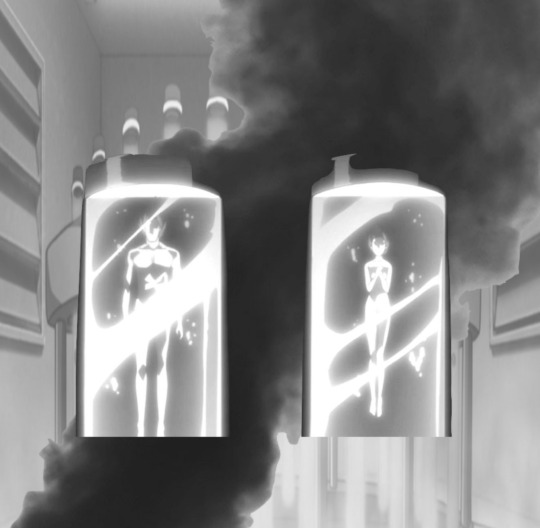
[D]: I would describe Faceless in Nippon as a meditative, aqueous travelogue on what it means to exist as a middle-class person in the twenty first century, the entirety of which is set in urban Japan.
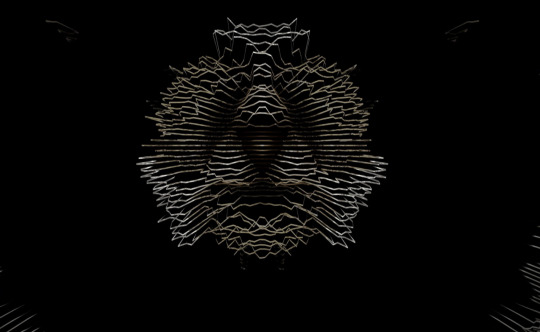
[D]: I really admire artists that have an unmistakable aesthetic stamp on their work. Auteurship, if you will. For what it’s worth, I think you are one of the few that has a singular, univocal voice in the online “outsider” lit community or whatever you want to call it. I would like to think mine is the same. That people will read it and go, “Oh fuck, that’s Dale alright.” I have been told before that my work reads like MDMA. I am exceedingly happy with that comparison. I would be pleased if that was how I was known as an artist after my “career” or whatever you want to call it is over. Basically, I want to create things that are uniquely my own, things that have not been attempted before. Another reason I think that you and I gel well together as creatives is that despite our many differences in aesthetics, we are enamored by the depth of so-called low culture and continually mash it together with the supposed “high culture” of literature.
The "Borges + USA Up All Night" example illustrates this perfectly.

[D]: Both Faceless in Nippon and Ultraviolet Torus will be available at similar times. However, there is no doubt that Faceless is my first book. It is the first thing I started working on when I didn’t know it was going to be what it became. Torus was a more experimental foray into the literary field. I compiled Torus, an exploration of gemstone and dream imagery, between drafts of Faceless. I was particularly taken by crystals, shoegaze, and giddiness over my interactions with some beautiful people on the internet at the time. It proved to be a fruitful break from Faceless rewrites, as not only did I let the novel marinate and become better before publishing it, I also gave birth to another creative treasure.

[D]: Making emotive words tactile, rendering the textually intangible tangible. This is something I want to see extended even further as we continue collaborating on our mall project. I want to delicately wrench the phaser knob on these effects and really see where we can go with our adventures in the literary sensorium.

[W]: I remember you saying you wanted Faceless in Nippon to "feel like floating in water." It made me think of a novel as a kind of sensory deprivation tank, the floating and the effects. Did you think of Ultraviolet Torus as a gem, in the abstract, or was the structuring of it more precisely gemlike? James [Krendel-Clark] and I wrote the rough draft of this Blanchot-bodyhorror, broken-videogame-reality novel called Cenotaph, and much of it deals with irrational spaces and Phildickian pulp. As far as sci-fi goes, the more subjective my take, the more "sci-fi" it seems to become. Just last night I drifted between three realities - one in which I was an unemployed writer living under Covid-19, one in which I destroyed an organic ship/braincraft with a cyber-tank, and another where I trained as a druid mage in a treacherous cursed desert. Of course these last two were games and that doesn't even entail any other branching realities that came about as well with regard to books, narratives, televisual influences, lies we tell ourselves, 5G brain-attacking waves, et al. It's late and I'm stoned and tired but yeah. Nick Greer is a fascinating individual. I didn't know you knew him. We spoke about set theory once. Gödel. I read very little, yeah. Or I should say I don't sit and read a physical book as often as I used to. I read rigorously for a good 20 years. If I'm awake enough to read, I usually would want to spend that time writing, or perhaps gaming. Or dreaming. All of these beats - the fictional beverages and ads and playing metafictionally with products and whatnot - I kind of live for that shit. I do that more and more. And it's not even a critique or any kind of satire of it for me - like the low-rez haze of 1-900 commercials was a fuzzy heaven in a box for me as a kid. The K-Mart cafeteria did possess a unique and strange power. I think we're kind of on the same page here as far as we share a kind of reverence for the artificial, the things rendered meaningless through mass production, and other similar slippery intangibles. There is a wonder here that sets it apart from, say, a satirical/scathing view of consumerist life. God, yeah, your experience in Japan. I think I've experienced similar stuff. I remember a time in 2000 when Boca Raton, Florida, was kind of magical for me. I went there a few years back; it's just any place now. Such a strange thing. And sad too. This is the only kind of interview I'd conduct, one with a writer whose work I think truly good. You might've remarked upon the melancholic allure of vending machines coding out at night. Or something similar. It's that sort of sentiment I recognized straightaway as what I consider tuned-in to a cryptic aesthetic I love. I was relieved to discover your wordcraft was honed – that's usually the big problem for me liking someone's work. One of the big draws for me about your work is the stuff you're able to do that I really dig but am not really suited to pull off myself, such as the MDMA vibe, or the ennui mixed with light, hope, etc. There are a dozen or so singular voices around in the online outsider-lit community/whatever, voices I'd consider distinctive: you, Clark, Elytron Frass, Durban Moffer – a few others.

[W]: Your themes I would say demand nuance and control. We've talked about how our mall project is slow-going because it seems very painstaking, almost like etching or surgery or something. Introspective, in any case. Although I just sort of dismissed reading a second ago, I do believe that a unique body of work is made unique by a dizzying variety of blendered influences. I had that 15-year stretch in the suffering cubes to read pretty much constantly, and haphazardly, as far as selection, in a lot of ways, so my influence map is like really fucking bizarre and extensive, which I think makes my stuff appear unique, when all that is unique about it probably is my little perspective or whatever subjectivity is injected into this array of eclectic influences.
1 note
·
View note
Note
Hi! What are your top 10 ships (any fandom)?
Hi, ty for asking! This is really hard to narrow down lol, but I tried.
In no particular order:
Guts/Griffith - Berserk
The current otp ofc. What can I say that I haven’t already said all over this blog?
Will/Hannibal - NBC Hannibal
This is my ideal ship. It’s stupid how perfect it is. It’s basically my ideal slowburn longfic but yk as a 3 season gorgeously shot and acted tv show.
Doctor/Master (especially Three/Delgado Master, and excluding het combinations lol) - Doctor Who
This ship is fantastic because it’s so versatile. You want childhood friends to lovers (to enemies)? Gallifrey era. You want bitter exes or frenemies with benefits? Three/Delgado. Five/Ainley was never my thing but if you want creepy villain/plucky hero there you go. You want former enemies who now live together in weird domestic bliss? Shalka. You want pathetic desperate protag willing to throw his ideals along with the rest of the world under a bus to get laid? Ten/Simm. It’s even got its own rairpairs, like cross era combinations or Two/Warchief. This ship can run the gamut from fluff to angst to serious darkfic and never be ooc. It’s a delight.
Harry/Draco - Harry Potter
I mean I loved it when I was 14 and even though I couldn’t care less about Harry Potter now it’s still there for me. Like, if I want to read something gay and can’t find anything that strikes my fancy? I turn to drarry man, there’s so much genuinely fantastic novel length fic out there, you’ll never run out.
Xena/Gabrielle - Xena: Warrior Princess
Xena/Gab is an odd ship for me because they’re not really my type lol. Friends to lovers is something I’ve always been a little meh about, and while they have their tense and interesting and complex moments their appeal is mainly the soulmate thing. But this ship makes the list for two reasons: 1. they are immensely fun to watch together, like what they lack in an interesting dynamic they make up for in chemistry, and it’s a delight to watch the show and soak in all the ott subtext, and 2. Conqueror AUs. There’s a subgenre of Xena fic where Xena never turned good and met Gabrielle while she’s ruling the known world with an evil iron fist, and some of that has the good dynamics.
Fraser/Ray Vecchio - Due South
Honestly the main reason I ship them is because I love Ray and Ray loves Fraser, and Ray is one of those very rare faves that I actually want to be happy lol. But they do have a really interesting, and somewhat unique for me dynamic - Fraser prioritizes the abstract concept of duty over everything else, to really destructive lengths at times, while Ray prioritizes Fraser over everything else, also to really destructive lengths at times, and this leads to an unbalanced but v interesting relationship. Especially because like, this isn’t just a result of the show prioritizing Fraser lol, the narrative is very aware of this dynamic and explores it in interesting ways.
Eve/Villanelle - Killing Eve
I was into it from the start, and completely sold when Eve stabbed Villanelle. They’ve got the interesting shifting power dynamics, the disparate morals edging towards meeting in the middle, the violence, the chemistry, even the cute little domestic moments here and there. tbh I am a little.. nervous about where this show is going with them, because I am concerned they’re playing the Villanelle as a psychopath who can’t ~genuinely love~ thing straight, which could not be less interesting to me, but still, so far I’ve gotten more than enough material to keep me happy and hopeful.
D/Leon - Pet Shop of Horrors
In general they’re just a ridiculously fun dynamic, like come on. You’ve got the odd couple thing, you’ve got Leon switching between criminally investigating D and basically coparenting his brother with him, they all go on vacation together at one point, they have like, a dragon kid together, and who doesn’t love the married couple bickering? Also the ending [vague spoilers] is exactly the kind of sad romance I love. They both realize they’re in love, and D chooses to run the fuck away because he doesn’t know how to love a human, while Leon chooses to run the fuck after him for the rest of his life if that’s what it takes. This is technically subtext, but only barely.
Troy/Abed - Community
They had me at the Somewhere Out There duet. I stopped caring about the show after season 3 and I’ve only seen a few episodes since, but man when Community was good it was great and Troy and Abed were the mvps and clear otp of the show. Tragic that Harmon couldn’t commit beyond gay jokes tbh, but at least we’ll always have the romantic zombie episode.
Starsky/Hutch - Starsky and Hutch
This is a bit of a weird choice because I was never super into the fandom, like I haven’t read much fic, and I watched the show back in like my first year of university but not really since because like, it’s a 70s cop show lol, there’s not a whole lot that’s worth watching about it. But man, Starsky and Hutch are the damn kings of the extremely emotionally intense homoerotic friendship. Their off the charts chemistry and constant hurt/comfort plots were next level, and fully engaging and super fun to watch despite everything else.
(Also the 4th season is terrible, but shockingly good and ridiculously coherent if you watch it with the understanding that in between season 3+4 they had sex or made out or something and Starsky freaked out and Hutch is alternately depressed and pissed off at Starsky for his avoidance. Like that reading legit ties everything together lol, from their suddenly strained relationship to random jokes(?) like Hutch encouraging Starsky to try free word association, giving him the word “closet” to start, and Starsky getting mad about it for no reason. And in the 4th to last episode (production order) they clearly finally get together for real, in the coda to Starsky vs Hutch. I mean come on they fight while dating the same woman and then make up off screen and the final scene is the two of them meeting her in a bar and telling her she gets both together or neither, then walking away with their arms around each other when she turns them down.
I may have just wanted to ramble about this lol.)
4 notes
·
View notes
Note
Do you have any good dystopian novels with lgbtq people to recommend?
I do! Try these, which you can also find here https://lgbtqreads.com/sff/spec-fic-by-subgenre/:
YA
The Scorpion Rules by Erin Bow – B
The Culling by Steven dos Santos
Rainbow Islands by Devin Harnois – T
Lizard Radio by Pat Schmatz – NB
Coda by Emma Trevayne – B
Adult
When You Were Pixels by Julio Alexi Genao
Blackfish City by Sam J. Miller – L
Chameleon Moon by RoAnna Sylver – A,L,T
43 notes
·
View notes
Text
Coda
Sian Heder’s CODA (2021) is firmly ensconced within the inspirational teacher/troubled student subgenre, with the focus here on the student (Emilia Jones) and being the hearing child of deaf parents subbing for other films’ use of a life in the coal mines and an illegitimate child (THE CORN IS GREEN), childhood sexual abuse (GOOD WILL HUNTING), race, gender, economic status, etc. Good for Marlee Matlin, who plays the mother, for insisting the other deaf characters be played by deaf actors (the very good Troy Kotsur and Daniel Durant), and good for the film for showing the characters as fully functional professionals and sexual beings rather than the tin-plated saints of too many “Hollywood” treatments of disability. There are some very moving scenes dealing with Jones’ relationship with her family, though it’s a little obvious that she has heart-to-hearts with mother, father and brother in turn. Kotsur will probably win the Oscar because his character is the most entertaining, particularly when signing about sexual topics, and probably deserves it for a beautiful scene in which he feels Jones’ singing. Matlin wasn’t even nominated, though her performance is also quite powerful, and it’s refreshing that she’s one of the most resistant to her daughter’s going into singing much less going off to college. The scenes with Jones’ boyfriend (Ferdia Walsh-Peelo) are painfully boring, and it seems strange Jones’ parents wouldn’t know how to behave at a choir concert. For that matter, the film seems to take place in a world without ADA compliance standards, though their absence makes it easier to create obstacles for Jones’ dreams. Nonetheless, CODA hits a lot of good emotional notes, and I only hated myself a little bit for the times I was moved to tears.

0 notes
Text
Low - Hey What
Thirteenth studio album from the indie rock duo from Duluth, Minnesota produced by BJ Burton
9/13

Low seemed a singular band from the outset. They were a married, practising Mormon couple, devoted to playing as quietly and slowly as possible, in the teeth of the early 90s grunge era. In fact, Low stood out so much that people felt obliged to invent a new subgenre to describe what they were doing: slowcore. It was a label the band disliked and quickly outgrew; it turned out they could move at quite a clip when it suited them.
Then, 25 years into their career, Low became more singular still. Their sound had always shifted and changed, occasionally in unpredictable directions, and electronic percussion had crept into 2015’s Ones and Sixes. But nothing could quite prepare listeners for 2018’s Double Negative, which took the kind of studio processes commonplace in modern mainstream pop – pitchshifted vocals, digital manipulation, the sidechain compression that causes the rhythm tracks on pop-dance hits to punch through everything else – cranked all of them up to 11 and applied them to a rock band. The end result was an album that genuinely sounded like nothing else. Low weren’t the only alt-rock artists thinking along roughly similar lines – Double Negative was produced by BJ Burton, who had worked on Bon Iver’s technology-fractured 22, A Million – but the sheer extremity with which the band’s sound was altered shifted Double Negative into a category of its own.
Moreover, it was released 18 months into the Trump presidency, as his campaign managers were jailed for fraud, and Rudy Giuliani informed NBC that “truth isn’t truth”. Its lyrics seldom addressed American politics – dealing instead with everything from Mormon attitudes to same-sex marriage to mental health – but its short-circuiting bursts of unidentifiable sound, warped vocals and overwhelming mood of dread still seemed to fit the moment, feeling like a transmission from a country disastrously on the fritz, “dissolved into a state of awful inverse” as its closing track put it.
Album of the year acclaim duly followed, but the shock of Double Negative also seemed to raise concerns for the band who’d made it. It sounded like music literally pushed to the limit, and once you’ve pushed everything to the limit, the question of where you go next becomes pressing. Happily, that’s a query that Hey What answers perfectly by refining and adapting its predecessor’s sound.
The first thing you hear on opener White Horses is a guitar transformed into a kind of heaving, stuttering moan, followed by a rhythm track made up of crunching digital distortion. The latter sound might once have been produced by a guitar, but it’s impossible to say for certain. The song ends with an unadorned minute and a half of its unflinching pulse, which speeds up and becomes the basis of the second track, I Can Wait. Next, when you encounter the spongy sonic textures of All Night – you eventually give up trying to work out what instrument was originally involved – it’s hard not to be struck by the thought that on anyone else’s album, this might constitute the weirdest track; on Hey What, it feels like a kind of breather, before you’re plunged into the increasingly scourging soundworld of Disappearing.
Notice is thus served that Low are not interested in dialling down Double Negative’s confrontational experimental edge, but that isn’t the whole story. Hey What is also a far more melodically driven album than its predecessor. Alan Sparhawk and Mimi Parker’s beautiful harmony vocals are largely unadorned with processing, and are louder, which seems to give the songs – or at least the listener – a little more space to breathe.
This chimes with the tone of the album, which couldn’t be characterised as optimistic, but at least hits a note of stoicism. The strength of Sparhawk and Parker’s partnership as bulwark against the former’s struggle with depression informs Don’t Walk Away and The Price You Pay (It Must Be Wearing Off). The lyrics of Days Like These consider the world lurching from crisis to crisis, but there’s something really stirring about the melody, which strides through the backing’s explosions of frazzled sound, while the extended instrumental coda feels calm and resolved. At other points, juxtaposition of the voices and the music is more unsettling: Hey boasts the album’s loveliest tune, but it’s set against a backing that keeps changing from delicate, flickering ambience to something far darker and creepier. Stranger still, in its own peculiar way, Hey What rocks, not least on the fantastic More, based around a riff that seems equal parts Led Zeppelin and My Bloody Valentine, if you squint.
A lot of bands have been compared to My Bloody Valentine over the years, largely because they were trying desperately to sound like them. Low really aren’t, but they feel an appropriate name to raise nevertheless. The music Low are currently making carries a similar, head-turning, where-the-hell-did-this-come-from air to Isn’t Anything and Loveless; as with those albums, the people behind Hey What are redefining how a rock band can sound. It says something – about Low and about rock music – that you have to delve back 30 years to find something with those qualities.
youtube
https://www.theguardian.com/music/2021/sep/09/low-hey-what-review
0 notes
Text
Ranking all 9 Led Zeppelin albums, from worst to best
Led Zeppelin is without a doubt my second favorite band, following Pink Floyd. There is no doubt that these two bands really defined the 70s, with Pink Floyd pushing progressive rock into mainstream, influencing bands like Rush, Yes, Genesis, while Led Zeppelin was pushing harder rock, influencing bands like AC/DC, Rush (whose first album was pretty much a Zeppelin ripoff until they began exploring their more creative, progressive rock side), Van Halen, and even Black Sabbath. Led Zeppelin helped pioneered the 70s. They are one of the very few popular bands that didn’t won a single Grammy award.
Led Zeppelin is also one of the very few rock bands that not only helped push rock and roll as it is today, but they are one of the very few bands that explored all subgenres of rock: from blues to folk, to metal to progressive rock, Led Zeppelin became one of the most popular artists of all time, often competing in the third spot with Michael Jackson and The Beatles.
The Who’s original drummer, Keith Moon, heard the band (at the time was the New Yardbirds and with different band members) and jokingly said, “you guys are going to fall like a lead balloon.” Jimmy Page changed the name from The New Yardbirds to Led Zeppelin, dropping the A out to of lead to make it cooler. Pete Townshend, however, would quickly grow hatred for Led Zeppelin, while mocking his own band just the same. Black Sabbath often went to their gigs, and two members of Zeppelin, Bonham and Plant, often visited Black Sabbath, with Bonham asking Bill Ward to play his drum set, of which Ward would decline, fearing Bonham would damage his set.
Many would argue who started the metal movement: Led Zeppelin or Black Sabbath. While Led did come out a year before Sabbath, there’s no question that Sabbath’s descent into more darker, harder rock in their later years really defined the metal movement, while Zeppelin moved from blues to folk and progressive rock in their later albums. Nevertheless, Led Zeppelin helped shape hard rock and rock and roll in general, and their influence can be heard decades to come. With just only 8 studio albums and a rarities album, Led Zeppelin is still a popular, influential band. Here’s my list of their albums, ranked from what I think is their worst to best albums. This my personal ranking, and I know I may piss a few people off, but this is a matter of my taste.
9. Coda, 1982. With the shocking death of John Bonham, Page, Plant, and Jones quickly departed, ending Led Zeppelin. The band was on the edge of splitting up, with their previous and last studio album was recorded on separate occasions because two members couldn’t deal seeing each other, but more on that within a couple of minutes. Coda was released as a tribute to the late Bonham, with the band releasing tracks from their previous albums. What we get with Coda is a forgotten mess of songs that were clearly cut for obvious reasons. Not to say Coda is a bad album, it’s just mediocre at its best. “Wearing and Tearing,” the album’s closer, is the one that often stands out for me, while I feel that the other tracks really don’t highlight Zeppelin’s greater works.
8. Presence, 1976. The only Led Zeppelin album without a keyboard, Presence sees Led Zeppelin turning to their roots in favor of more blues driven rock of the first two albums. While I think Presence is a good album, I find that without the lack of keyboards from Jones really drags this album down. While many think the ten minute opener “Achilles Last Stand” is an epic, underrated Zeppelin track, I do find the song drags by the midway point as the band doesn’t offer much interchangeability in the track, often repeating itself for ten long minutes. “Tea For One” is the album’s nine minute closer, which is a boring mock off to the great track from Led Zeppelin III, “Since I’ve Been Loving You,” without Jones’ great keyboard works. However, I do enjoy “For Your Life,” “Nobody’s Fault but Mine” and “Candy Store Rock” the most off this album.
7. In Through the Out Door, 1979. Their last studio album, and perhaps their most controversial, In Through the Out Door sees the band bringing back the keyboards that were lacking from Presence, but more in the forefront than their previous albums combined. On the verge of breaking up, Plant and Jones went into the studio together and began recording, leaving Page and Bonham to come in much later when the other two weren’t present, and began working on what Plant and Jones recorded. Though this album may be a tad messier than Presence, the band nevertheless took a much great risk, one I think is a better result. I do like the ten minute track “Carouselambra.” It show cases Jones’ keyboards while Page does a beautifully haunting guitar riffs in the middle of the song, before ending the song on a much funky tune. “In the Evening” is a great opener, one of the very few Zeppelin tracks that was played with a Stratocaster, a guitar Page was rare to see playing with. While “Fool in the Rain” and “All My Love” receive more radio play, my favorite track on the album, the closer “I’m Gonna Crawl.” Plant pays tribute to his dead son with “All My Love,” which is an okay song but one I find often overplayed in Zeppelin’s catalogue. At this time, Page and Bonham were struggling addicts, with alcohol eventually leading to Bonham’s death the following year, ending the classic rock band’s incredible career.
6. Led Zeppelin II, 1969. Zeppelin’s sophomore effort, coming out just months after their first album, Led Zeppelin II further explores their blues driven rock. The most well known song on the album, which the album opens with, “Whole Lotta Love” showcases that Page was began to explore a bit further, providing some soundscapes in the song’s middle, with scraping guitar techniques and even a Theremin. “What Is and What Should Never Be,” “Thank You,” “Ramble On,” and “Bring It On Home” are the highlights for me. Led Zeppelin II is a good classic album on its own right, no doubt about it, but I do feel this album is a bit more jejune compared to what’s to come the following few years.
5. Led Zeppelin, 1969. Their epic debut, Led Zeppelin quickly exploded. This debut album is surely one of the best debuts ever to put out in rock’s history, defining the band what they were and the sound they were after. Led Zeppelin push hard rock and blues rock into mainstream, while other bands around them were exploring progressive and psychedelic rock. What makes this album stand out for me compared to II is the underrated tracks that don’t often get much airplay. Most of these tracks seem to be forgotten about, ones that the radio don’t play compared to other more well known Zeppelin tracks. My favorite track is “How Many More Times,” an eight minute closer epic with a killer, catchy guitar riff that the song begins and ends with, while the middle is an exploration to different territories within the song. “Babe I’m Gonna Leave You” is another standout, with Page providing haunting acoustic before kicking it into high gear during the chorus. “You Shook Me” is another one that showcases Page’s talent with guitar shrieks and Plant delivering blues with a harmonica. “Black Mountain Side” is another great track showcasing Page’s skills on an acoustic guitar. While some Zeppelin fans may find this album a bit dull compared to the their other classic albums, this album for me still stands out as among on of their best efforts, and an underrated one at that.
4. Led Zeppelin III, 1970. A bit more of an uneven album, Led Zeppelin III really showcases the greatness to come. It is here where the band began to explore other than blues driven rock. While the album does have the kickass opener” Immigrant Song,” the albums also provides some harder classics like “Celebration Day” and “Out on the Tiles.” “Since I’ve Been Loving You” is one of my personal favorite Zeppelin tracks, with Jones providing a haunting organ soundscape as Page plays the blues on his guitar, while Plant delivers emotion on vocals. The second half of the album shows the band playing with more folk rock, with the song “Gallows Pole” showcasing the start of this trend (Jimmy even plays a banjo in this track). “Tangerine” and “That’s the Way” are slower songs with a beautiful and haunting lap steel guitar work by Page.
3. Houses of the Holy, 1973. Houses of the Holy really shows the band to explore in much more progressive rock territory all the while without losing their sound. While “D’yer Mak’er” is the weakest track for me (I’m not really a reggae kind of guy, sorry, though I think that genre is very good at live gigs and concerts), the other ones no doubt make up on this classic album. “The Song Remains the Same” is an underrated, kickass opener, with the combination of six and twelve string electric guitars. “The Rain Song” is another classic, a bit more Pink Floydish song with beautiful and haunting acoustic and electric guitar works by Page. If there is one song the band ever came close to sounding a little bit like Pink Floyd, “No Quarter” sees Jones playing a haunting keyboard while Page’s guitar is tuned half step, with piano overdubs playing in the middle when Page is delivering a solo. While I do think “The Ocean” is a bit overplayed, it’s nevertheless a classic closer to an amazing and still somehow underrated album.
2. Physical Graffiti, 1975. Their double album and one that provided their second biggest track, “Kashmir,” Physical Graffiti is the Zeppelin album that really covers their catalogue, from folk to blues to progressive rock, it no doubt this album is simply a classic, and one that perhaps made them bigger than they already were. The album started five years before, with Jimmy Page producing songs and kept them in a vault where when they were working on new material, Page has unleased these tracks that never found their way to their previous three albums. “The Rover” is one of my all time favorite tracks so Page uses the Phaser effect and delivers a catchy and killer guitar riff. “In my Time of Dying” is Led Zeppelin’s best long song, with a lot of guitar overdubs, from heavy blues to distorted slide, and Plant blasting on vocals about a man being on his death bed, while Bonham hammers with catchy drum fills when the band kicks it up a notch. “In the Light” is another progressive rock track that’s very underrated, often overshadowed by its famous sister, “Kashmir.” “Ten Years Gone” seems to be forgotten with some of the most poetic lyrics written by Plant as he reflects on life. “Down by the Seaside” is their take on a surf song but it becomes heavy in the middle. “Black Country Woman” is another take on folk rock, with the band actually recording outside and a plane can be overheard in the very beginning, with the members asking Jimmy to cut it out before Robert joining in, “nah, leave it, yeah.” “The Wanton Song” is a catchy bluesy, hard rock that seems to be forgotten. “Trampled Under Foot” is a bluesy and funky tune that’s also very underrated and obscured by other tracks on the album.
1. Led Zeppelin IV, 1971. There is no doubt Led Zeppelin exploded with their fourth album. It’s an amazing feat that only with eight songs, this album became an instant classic, and majority of the album, to this very day, still gets played. Though I would argue that these songs do often get overplayed, there’s something about them that somehow they never get too annoying to listen to, and that’s quite rare for songs that are repeated on radio stations. The kickass opener, “Black Dog” is catchy, blues song that was untitled until a black dog came in and bit Bonham during a recording, or so they say. “Rock and Roll” is another well known track, with catchy guitar overdubs and Plant hammering on the vocals, with Bonham ending the song with one of the best drum solos in rock history. “The Battle of Evermore” is a return to the folk rock the band experimented with their previous album. Here, Robert sings with Sandy Denny, as Page plays a mandolin. This track is simply underrated as Plant really delivers near the end with a delay effect. “Stairway to Heaven” is of course a classic progressive rock tune that mixes both folk and blues rock, with Plant sings poetic lyrics that many, to this day (and Plant himself) still don’t quite know the song’s true meaning. “Misty Mountain Hop” is another catchy, near funk tune that gets a slight overlook compared to other tracks, with Plant questing for better society. “Four Sticks” was another untitled track, with Bonham playing his drums with four drumsticks instead of the standard two. The song is in an odd timing, giving the track a bit more progressive rock feel. “Going to California” is another folk tune about one’s quest looking for love and settlement. “When the Levee Breaks” is simply one of the best Zeppelin tunes, and perhaps their best closer on an album they’ve ever done. It’s a bluesy, hard rock song with slides and overdriven guitar while Plants blows it out of water with harmonicas. The lyrics about going to Chico before the local dam breaks and floods the area. Without this album, Led Zeppelin probably wouldn’t have become a staple in all of rock and roll.
0 notes
Text
New from Every Movie Has a Lesson by Don Shanahan: MOVIE REVIEW: Arkansas

(Image courtesy of Lionsgate)
ARKANSAS— 3 STARS
Let’s just say it. The subgenre of redneck crime films is a messy place. The “black hat” is almost always a crazy SOB engaged with a less crazy SOV “white hat.” Slickness is replaced by stains. Dazzle is replaced by dinge. Calling any of them “sagas” is too much credit and heft. Unless you’re the Coen brothers (and even if you’re them too), spicing up this slow-and-low movie barbecue takes some of that absent slickness and dazzle injected into either the filmmaking or storytelling departments, or both.
Bumped by a cancelled SXSW, Arkansas has about half of that needed relish, but you sure wouldn’t know it from the first 20 to 30 minutes. Liam Hemsworth’s lead Kevin, with his Kris Kristofferson starter kit, dives right into a tough-talking and half-hearted voiceover putting down the so-called organized crime scene as more of a “loose affiliation of deadbeats and scumbags” than any kind of Dixie Mafia. By the time Kevin hits the “I’m a drug dealer” exclamation point in his limping introduction, this kind of overly obvious narration hits the groan-inducing Scorsese Lite territory.
Kyle is testy, impatient, and claims to have no feelings so that he can’t have hard ones when such moments usually call for them later. He spouts attempted codas (which will make many of this review’s signature life lessons), but the character’s self-appointed lack of life-defining philosophy makes for zero pathos. This dearth tends to be why most of these redneck crime movies are weak sauce. Kyle’s acquired partner-in-crime hopes to add a little flair to the “strong silent type that talks too much.”
That’s Swin, played by the film’s co-writer and director Clark Duke, with a query or a comeback for everything. He saunters with tacky wit and even tackier clothes. His long mane tops a doughy face with a pubescent mustache that somehow scores the smitten affection of local cutie Johnna (Eden Brolin of TV’s Yellowstone and Beyond). Swin and Kyle together aren’t convincing brains or brawn to any operation. Their pickles create a body count and fewer dollars for the unseen higher-ups.
LESSON #1: “RELYING ON OTHER PEOPLE IS THE FASTEST WAY TO END UP DEAD”— Another way this is said in Arkansas is “it ain’t smart to f–k around with people you don’t know.” When push comes to shove, only one person fits at the end of a knife point or a gun barrel at a time. Teamwork or a volume of slotted underlings can make a crime network and bring strength in numbers, but few of those moving parts ever bail another one out when asses and lives are on the line.
Where the potent kick for Arkansas finally hits is in its villain. Vince Vaughn dominates this film in a reserved, yet resplendent performance as Frog, the man who may or may not be the kingpin of all drug-running gambit behind the Rackensack curtain. Arkansas, based on the flashback-filled 2009 novel of the same name by John Brandon, is comprised of five labeled chapters, several of which chronicle the history of Frog’s looming presence.
Vaughn, in every way, makes it look natural in The Natural State. Frog’s exterior shell may be loud with those hideous shirts, vests, and bolo ties provided by up-and-coming costume designer Ashley Heathcock, but the actor’s heat simmering behind his lanky posture and signature drool smirk has bite better than any moonshine. Vince is on a roll maturing from his former manchild prime on the indie scene. He’s the reason to pack a VOD bag and visit Arkansas.
If Vince Vaughn is the slickness, then the uncommon artistic choices of Clark Duke, in his debut effort as a writer and director, are the dazzle. The feel of the movie and its chapters are spicy thanks to top-notch editing from Green Book Oscar nominee Patrick J. Don Vito. Cinematographer Steven Meizler (The Last Five Years) uses unflashy lighting with whips and pans spun all over the stellar location scouting of Joshua Crane and the designed hayseed gaudiness from Scott Enge. The setting may be simpleton, but the chops are not.
The most inspired finishing touch is the soundscape. Arkansas is filled with a soundtrack of re-spun country standards performed by The Flaming Lips and stylish score by the team of Devandra Banhart and Alexander Taylor. The 80s-era rockers count as quite a get for Duke and their covers of Johnny Lee, George Jones, The Gatlin Brothers, and Hank Williams Jr. turn the honky and wonky into something twisted and sublime.
LESSON #2: INCONSEQUENTIAL FALSEHOODS— The movie likes to talk about “inconsequential falsehoods” while being one itself. None of that offbeat style can save a meandering and mild story. It has the starting pace of a forced road movie and the ending wimper of an unfulfilled romance. No one in the movie nails their presence quite like Vaughn does, and you want more Frog every time the unsophisticated narrative drifts back to Kyle and Swin. He is given true roots over everyone else
Whether it’s Duke and co-writer Andrew Boonkrong, the source material, or both, this movie wavers wildly in tone and purpose. What could have been a menacing mystery ends up being little better than a quirky pickle or two. The movie drops a quote that inadvertently sums up its engagement stating “It’s better to have something to do, then to have something to do look for you.” Someone needed to give this movie more to do.

LOGO DESIGNED BY MEENTS ILLUSTRATED (#876)
Permalink
from REVIEW BLOG – Every Movie Has a Lesson https://ift.tt/35SoLWn via IFTTT
from WordPress https://ift.tt/2T0sf3V via IFTTT
0 notes
Text
Dusted’s Decade Picks

Heron Oblivion, still the closest thing to a Dusted consensus pick
Just as, in spring, the young's fancy turns to thoughts of love, at the end of the decade the thoughts of critics and fans naturally tend towards reflection. Sure, time is an arbitrary human division of reality, but it seems to be working out okay for us so far. We're too humble a bunch to offer some sort of itemized list of The Best Of or anything like that, though; a decade is hard enough to wrap your head around when it's just your life, let alone all the music produced during said time. Instead these decade picks are our jumping off points to consider our decades, whether in personal terms, or aesthetic ones, or any other. The records we reflect on here are, to be sure, some of our picks for the best of the 2010s (for more, check back this afternoon), but think of what follows less as anything exhaustive and more as our hand-picked tour to what stuck with us over the course of these ten years, and why.
Brian Eno — The Ship (Warp, 2016)
youtube
You don’t need to dig deep to see that our rapidly evolving and hyper-consciously inclusive discourse is taking on the fluidity of its surroundings. In 2016, a year of what I’ll gently call transformation, Brian Eno had his finger on multiple pulses; The Ship resulted. It’s anchored in steady modality, and its melody, once introduced, doesn’t change, but everything else ebbs and flows with the Protean certainty of uncertainty. While the album moves from the watery ambiguities of the title track, through the emotional and textural extremes of “Fickle Sun” toward the gorgeously orchestrated version of “I’m Set Free,” implying some kind of final redemption, the moment-to-moment motion remains wonderfully non-binary. Images of war and of the instants producing its ravaging effects mirror and counterbalance the calmly and increasingly gender-fluid voice as it concludes the titular piece by depicting “wave after wave after wave.” Is it all Salman Rushdie’s numbers marching again? The lyrics embody the movement from “undescribed” through “undefined” and “unrefined’” connoting a journey toward aging, but size, place, chronology and the music encompassing them remain in constant flux, often nearly but never quite recognizable. Genre and sample float in and out of view with the elusive but devastating certainty of tides as the ship travels toward silence, toward that ultimate ambiguity that follows all disillusion, filling the time between cycles. The disconnect between stasis and motion is as disconcerting as these pieces’ relationship to the songform Eno inherited and exploded. The album encapsulates the modernist subtlety and Romantic grace propelling his art and the state of a civilization in the faintly but still glowing borderlands between change and decay.
Marc Medwin
Cate Le Bon — Cyrk (Control Group, 2012)
youtube
There's no artist whose work I anticipated more this decade than Cate Le Bon, and no artist who frustrated me more with each release, only to keep reeling me in for the long run. Le Bon's innate talent is for soothing yet oblique folk, soberly psychedelic, which she originally delivered in the Welsh language, and continued into English with rustic reserve.
Except something about her pastoralism seems to bore her, and the four-chord arpeggios are shot through with scorches of noise, or sent haywire with post-punk brittleness. In its present state, her music is built around chattering xylophones and croaking saxophone, even as the lyrics draw deeper into memory and introspection, with ever more haunting payoffs. It's as if Nick Drake shoved his way into the leadership of Pere Ubu. She's taken breaks from music to work on pottery and furniture-making, and retreats to locales like a British cottage and Texas art colony to plumb for new inspirations. She's clearly energized by collaboration and relocation, but there’s a force to her persona that, despite her introverted presence, dominates a session. Rare for our age, she's an artist who gets to follow her muse full time, bouncing between record labels and seeing her name spelled out in the medium typefaces on festival bills.
Cyrk, from 2012, is the record where I fell in, and it captures her at something close to joyous, a half smile. Landing between her earliest folk and later surrealism, it is open to comparison with the Velvet Underground. But not the VU that is archetypical to indie rock – Cyrk is more an echo of the solo work that followed. There’s the sharp compositional order and Welsh lilt of John Cale. Like Lou Reed, she makes a grand electric guitar hook out of the words “you’re making it worse.” The homebound twee of Mo Tucker and forbidding atmosphere of Nico are present in equal parts. Those comparisons are reductive, but they demonstrate how Cyrk feels instantly familiar if you’ve garnered certain listening habits. Songs surround you with woolly keyboard and guitar hooks, and one can forget a song ends with an awkward trumpet coda even after dozens of listens. The awkwardness is what keeps the album fresh.
She lulls, then dowses with cold water. So Cyrk isn't an entirely easy record, even if it is frequently a pretty one. The most epic song here, reaching high with those woolly hums and twang, is "Fold the Cloth.” It bobs along, coiling tight as she reaches into the strange register of female falsetto. Le Bon cranks out a fuzz solo – she's great at extending her sung melodies across instruments. Then the climax chants out, "fold the cloth or cut the cloth.” What is so important about this mundane action? Her mystery lyrics never feel haphazard, like LSD posey. They are out of step with pop grandiose. Maybe when her back is turned, there's a full smile.
Who are "Julia" and "Greta,” two mid-album sketches that avoid verse-chorus structure? Julia is represented by a limp waltz, Greta by pulses on keyboards. Shortly after the release, Le Bon followed up with the EP Cyrk II made up of tracks left off the album. To a piece, they’re easier numbers than "Julia" and "Greta.” The cryptic and the scribble are essential to how Cyrk flows, which is to say it flows haltingly.
This approach dampens her acclaim and her potential audience, but that's how she fashions decades-old tropes into fresh art. She’s also quite the band leader. Drummers have a different thud when they play on her stage. Musicians' fills disappear. She brings in a horn solo as often as she lays down a guitar lead. The closer tracks, "Plowing Out Pts 1 & 2," aren't inherently linked numbers. By the second part, the group has worked up to a carnival swirl, frothing like "Sister Ray" yet as sweet as a children's TV show theme. Does that sound sinister? The effect is more like heartbreak fuelling abandon, her forlorn presence informing everyone's playing.
Fuse this album with the excellent Cyrk II tracks, and you can image a deluxe double LP 10th anniversary reissue in a few years. Ha ha no. I expect nothing so garish will happen. It sure wouldn't suit the artist. In a decade where "fan service" became an everyday concept, Le Bon is immune. She's a songwriter who seems like she might walk away from at all without notice, if that’s where her craftsmanship leads. The odd and oddly comfortable chair that is Cyrk doesn't suit any particular decor, but my room would feel bare without it.
Ben Donnelly
Converge — All We Love We Leave Behind (Epitaph)
youtube
Here’s the scenario: Heavily tatted guy has some dogs. He really loves his dogs. Heavily tatted guy goes on tour with his band. While he’s on the road, one of his dogs dies. Heavily tatted guy gets really sad. He writes a song about it.
That should be the set-up for an insufferably maudlin emo record. But instead what you get is Converge’s “All We Love We Leave Behind” and the searing LP that shares the title. The songs dive headlong into the emotional intensities of loss and reflect on the cost of artistic ambition. The enormously talented line-up that recorded All We Love We Leave Behind in 2012 had been playing together for just over a decade, and vocalist Jacob Bannon and guitarist Kurt Ballou had been collaborating for more than twenty years. It shows. The record pummels and roars with remarkable precision, and its songs maniacally twist, and somehow they soar.
Any number of genre tags have been stuck on (or innovated by) Converge’s music: mathcore, metalcore, post-hardcore. It’s fun to split sonic hairs. But All We Love… is most notable for its exhilarating fury and naked heart, musical qualities that no subgenre can entirely claim. Few bands can couple such carefully crafted artifice with such raw intensity. And few records of the decade can match the compositional wit and palpable passion of All We Love…, which never lets itself slip into shallow romanticism. It hurts. And it ruthlessly rocks.
Jonathan Shaw
EMA — The Future’s Void (City Slang, 2014)
youtube
When trying to narrow down to whatever my own most important records of the decade are, I tried to keep it to one per artist (as I do with individual years, although it’s a lot easier there). Out of everyone, though, EMA came by far the closest to having two records on that list, and this could have been 2017’s Exile in the Outer Ring, which along with The Future’s Void comes terrifyingly close to unpacking an awful lot of what’s going wrong, and has been going wrong, with the world we live in for a while now. The Future’s Void focuses more on the technological end of our particular dystopia, shuddering both emotionally and sonically through the dead end of the Cold War all the way to us refreshing our preferred social media site when somebody dies. EMA is right there with us, too; this isn’t judgment, it’s just reporting from the front line. And it must be said, very few things from this decade ripped like “Cthulu” rips.
Ian Mathers
The Field — Looping State of Mind (Kompakt, 2011)
Looping State of Mind by The Field
On Looping State of Mind, Swedish producer Axel Willner builds his music with seamlessly jointed loops of synths, beats, guitars and voice to create warm cushions of sound that envelop the ears, nod the head and move the body. Willner is a master of texture and atmosphere, in lesser hands this may have produced mere comfort food but there is spice in the details that elevates this record as he accretes iotas of elements, withholding release to heighten anticipation. Although this is essentially deep house built on almost exclusively motorik 4/4 beats, Willner also plays with ambient, post-punk and shoegaze dynamics. From the slow piano dub of “Then It’s White,” which wouldn’t be out of place on a Labradford or Pan American album, to the ecstatic shuffling lope of “Arpeggiated Love” and “Is This Power” with its hint of a truncated Gang of Four-like bass riff, Looping State of Mind is a deeply satisfying smorgasbord of delicacies and a highlight of The Field’s four album output during the 2010s.
Andrew Forell
Gang Gang Dance — “Glass Jar” (4AD, 2011)
youtube
Instead of telling you my favorite album of the decade — I made my case for it the first year we moved to Tumblr, help yourself — it feels more fitting to tell you a story from my friend Will about my favorite piece of music from the last 10 years, a song that arrived just before the rise of streaming, which flattened “the album experience” to oppressive uniformity and rendered it an increasingly joyless, rudderless routine of force-fed jams and AI/VC-directed mixes catering to a listener that exists in username only. The first four seconds of “Glass Jar” told you everything you needed to know about what lie ahead, but here’s the kind of thing that could happen before everything was all the time:
I took eight hours of coursework in five weeks in order to get caught up on classes and be in a friend's wedding at the end of June. Finishing a week earlier than the usual summer session meant I had to give my end-of-class presentations and turn in my end-of-class papers in a single day, which in turn meant that I was well into the 60-70 hour range without sleep by the time I got to the airport for an early-morning flight. (Partly my fault for insisting that I needed to stay up and make a “wedding night” mix for the couple — real virgin bride included — and even more my fault for insisting that it be a single, perfectly crossfaded track). I was fuelled only by lingering adrenaline fumes and whatever herbal gunpowder shit I had been mixing with my coffee — piracetam, rhodiola, bacopa or DMAE depending on the combination we had at the time. At any rate, eyes burning, skull heavy, joints stiff with dry rot, I still had my wits enough to refuse the backscatter machine at the TSA checkpoint; instead of the usual begrudging pat-down, I got pulled into a separate room. Anyway, it was a weird psychic setback at that particular time, but nothing came of it. Having arrived at my gate, I popped on the iPod with a brand new set of studio headphones and finally got around to listening to the Gang Gang Dance I had downloaded months before. "Glass Jar," at that moment, was the most religious experience I’d had in four years. I was literally weeping with joy.
Point being: It is worth it to stay up for a few days just to listen to ‘Glass Jar’ the way it was meant to be heard.
Patrick Masterson
Heron Oblivion — Heron Oblivion (Sub Pop, 2016)
Heron Oblivion by Heron Oblivion
Heron Oblivion’s self-titled first album fused unholy guitar racket with a limpid serenity. It was loud and cathartic but also pure beauty, floating drummer Meg Baird’s unearthly vocals over a sound that was as turbulent and majestic as nature itself, now roiled in storm, now glistening with dewy clarity. The band convened four storied guitarists—Baird from Espers, Ethan Miller and Noel Harmonson from Comets on Fire and Charlie Sauffley—then relegated two of them to other instruments (Baird on drums and Miller on bass). The sound drew on the full flared wail and scree of Hendrix and Acid Mothers Temple, the misty romance of Pentangle and Fairport Convention. It was a record out of time and could have happened in any year from about 1963 onward, or it could have not happened at all. We were so glad it did at Dusted; Heron Oblivion’s eponymous was closer to a consensus pick than any record before or since, and if you want to define a decade, how about the careening riffs of “Oriar” breaking for Baird’s dream-like chants?
Jennifer Kelly
The Jacka — What Happened to the World (The Artist, 2014)
youtube
Probably the most prophetic rap album of the 2010s. The Jacka was the king of Bay rap since he started MOB movement. He was always generous with his time, and clique albums were pouring out of The Jacka and his disciples every few months. Even some of his own albums resembled at times collective efforts. This generosity made some of the albums unfocused and disjointed, yet what it really shows is that even in the times when dreams of collective living were abandoned The Jacka still had hopes for Utopia and collective struggles. It was about the riches, but he saw the riches in people first and foremost.
This final album before he was gunned down in the early 2014 is full of predictions about what’s going to happen to him. Maybe this explains why it’s focused as never before and even Jacka’s leaned-out voice has doomed overtones. This music is the only possible answer to the question the album’s title poses: everything is wrong with the world where artists are murdered over music.
Ray Garraty
John Maus — We Must Become Pitiless Censors of Ourselves (Upset The Rhythm, 2011)
We Must Become the Pitiless Censors of Ourselves by John Maus
Minnesota polymath John Maus’ quest for the perfect pop song found its apotheosis on his third album We Must Become Pitiless Censors of Ourselves in 2011. On the surface an homage to 1980s synth pop, Maus’ album reveals its depth with repeated listens. Over expertly constructed layers of vintage keyboards, Maus’ oft-stentorian baritone alternately intones and croons deceptively simple couplets that blur the line between sincerity and provocation. Lurking beneath the smooth surface Maus uses Baroque musical tropes that give the record a liturgical atmosphere that reinforces the Gregorian repetition of his lyrics. The tension between the radical ironic banality of the words and the deeply serious nature of the music and voice makes We Must Become Pitiless Censors of Ourselves an oddly compelling collection that interrogates the very notion of taste and serves an apt soundtrack to the post-truth age.
Andrew Forell
Joshua Abrams & Natural Information Society — Mandatory Reality (Eremite, 2019)
Mandatory Reality by Joshua Abrams & Natural Information Society
Any one of the albums that Joshua Abrams has made under the Natural Information Society banner could have made this list. While each has a particular character, they share common essences of sound and spirit. Abrams made his bones playing bass with Nicole Mitchell, Matana Roberts, Mike Reed, Fred Anderson, Chad Taylor, and many others, but in the Society his main instrument is the guimbri, a three-stringed bass lute from Morocco. He uses it to braid melody, groove, and tone into complex strands of sound that feel like they might never end. Mandatory Reality is the album where he delivers on the promise of that sound. Its centerpiece is “Finite,” a forty-minute long performance by an eight-person, all-acoustic version of Natural Information Society. It has become the main and often sole piece that the Society plays. Put the needle down and at first it sounds like you are hearing some ensemble that Don Cherry might have convened negotiating a lost Steve Reich composition. But as the music winds patiently onwards, strings, drums, horns, and harmonium rise in turn to the surface. These aren’t solos in the jazz sense so much as individual invitations for the audience to ease deeper into the sonic entirety. The music doesn’t end when the record does, but keeps manifesting with each performance. Mandatory Reality is a nodal point in an endless stream of sound that courses through the collective unconscious, periodically surfacing in order to engage new listeners and take them to the source.
Bill Meyer
Mansions — Doom Loop (Clifton Motel, 2013)
youtube
I knew nothing about Mansions when I first heard about this record; I can’t even remember how I heard about this record. But I liked the name of the album and the album art, so I listened to it. Sometimes the most important records in your decade have as much to do with you as with them. I’d been frantically looking for a job for nearly two years at that point, the severance and my access Ontario’s Employment Insurance program (basically, you pay in every paycheck, and then have ~8 months of support if you’re unemployed) had both ran out. I was living with a friend in Toronto sponsoring my American wife into the country (fun fact: they don’t care if you have an income when you do that), feeling the walls close in a little each day, sure I was going to wind up one of those kids who had to move back to the small town I’d left and a parent’s house. There were multiple days I’d send out 10+ applications and then walk around my neighbourhood blasting “Climbers” and “Out for Blood” through my earbuds, cueing up “La Dentista” again and dreaming of revenge… on what? Capitalism? There was no more proximate target in view. That’s not to say that Doom Loop is necessarily about being poor or about the shit hand my generation (I fit, just barely) got in the job market, or anything like that; but for me it is about the almost literal doom loop of that worst six months, and I still can’t listen to “The Economist” without my blood pressure spiking a little.
Ian Mathers
Protomartyr — Under Colour of Official Right (Hardly Art, 2014)
Under Color of Official Right by Protomartyr
By my count, Protomartyr made not one but four great albums in the 2010s, racking up a string of rhythmically unstoppable, intellectually challenging discs with absolute commitment and intent. I caught whiff of the band in 2012, while helping out with editing the old Dusted. Jon Treneff’s review of All Passion No Technique told a story of exhilarant discovery; I read it and immediately wanted in. The conversion event, though, came two years later, with the stupendous Under Color of Official Right, all Wire-y rampage and Fall-spittled-bile, a rattletrap construction of every sort of punk rock held together by the preening contempt of black-suited Joe Casey. Doug Mosurock reviewed it for us, concluding, “Poppier than expected, but still covered in burrs, and adeptly analyzing the pain and suffering of their city and this year’s edition of the society that judges it, Protomartyr has raised the bar high enough for any bands to follow, so high that most won’t even know it’s there.” Except here’s the thing: Protomartyr jumped that bar two more times this decade, and there’s no reason to believe that they won’t do it again. The industry turned on the kind of bands with four working class dudes who can play a while ago, but this is the band of the 2010s anyway.
Jennifer Kelly
Tau Ceti IV — Satan, You’re the God of This Age, but Your Reign Is Ending (Cold Vomit, 2018)
Satan, You're The God of This Age But Your Reign is Ending by Tau Ceti IV
This decade was full of takes on American primitive guitar. Some were pretty good, a few were great, many were forgettable, and then there was this overlooked gem from Jordan Darby of Uranium Orchard. Satan, You’re the God of This Age, but Your Reign Is Ending is an antidote to bland genre exercises. Like John Fahey, Darby has a distinct voice and style, as well as a sense of humor. Also like Fahey, his playing incorporates diverse influences in subtle but pronounced ways. American primitive itself isn’t a staid template. Though there are also plenty of beautiful, dare I say pastoral moments, which still stand out for being genuinely evocative.
Darby’s background in aggressive electric guitar music partly explains his approach. (Not sure if he’s the only ex-hardcore guy to go in this direction, but there can’t be many.) His playing is heavier than one might expect, but it feels natural, not like he’s just playing metal riffs on an acoustic guitar. But heaviness isn’t the only difference. Like his other projects, Satan is wonderfully off-kilter. This album’s strangeness isn’t reducible to component parts, but here are two representative examples: “The Wind Cries Mary” gradually encroaches on the last track, and throughout, the microphone picks up more string noise than most would consider tasteful. It all works, or at least it’s never boring.
Ethan Milititisky
Z-Ro — The Crown (Rap-a-Lot, 2014)
youtube
When singing in rap was outsourced to pop singers and Auto Tune, Z-Ro remained true to his self, singing even more than he ever did. He did his hooks and his verses himself, and no singing could harm his image as a hustler moonlighting as a rapper. He can’t be copied exactly because of his gift, to combine singing soft and rapping hard. It’s a sort of common wisdom that he recorded his best material in the previous decade, yet quite apart from hundreds of artists that continued to capitalize on their fame he re-invented himself all the past decade, making songs that didn’t sound like each other out of the same raw material. The Crown is a tough pick because since his post-prison output he made solid discs one after each other.
Ray Garraty
#dusted magazine#best of 2010s#brian eno#marc medwin#cate le bon#ben donnelly#EMA#ian mathers#the field#andrew forell#gang gang dance#patrick masterson#heron oblivion#jennifer kelly#the jacka#ray garraty#john maus#joshua abrams#bill meyer#mansions#protomartyr#tau ceti iv#Ethan Milititsky#z-ro#converge#jonathan shaw
15 notes
·
View notes
Text
In Ascending Order: Top 50 Songs of the ‘90s

The ‘90s have become sort of an idyllic period that many Millennials and Gen Xers look fondly upon. It makes sense — the economy was good, Seinfeld ruled televisions, we weren’t worried about either the USSR or North Korea nuking us — but if there’s one thing that has really kept the ‘90s beloved, it’s the music.
There’s something for everyone at the end of the 20th Century, from grunge to gangsta rap to boy bands to Britpop. The ‘90s featured rock’s final years of pop relevance, as well as the blossoming of its underground movements. Hip-hop became a massive cultural force. And although pop wasn’t as strong as it was in the ‘80s, it did have a nice bounce-back period near Y2K.
Capturing the essence of the wildly-divergent ‘90s in just 50 songs is difficult, but I took a swing at it anyways. Let’s dive in:
HONORABLE MENTIONS:
> “Even Flow” by Pearl Jam (1992): Since I’m a Puget Sound native, I should love Pearl Jam more than I do. But sorry, I’ve never been able to muster too much love for the iconic grunge act. That said, “Even Flow” has a great, energetic groove that goes nicely with Eddie Vedder’s bellow.
> “Not If You Were the Last Junkie On Earth” by the Dandy Warhols (1997): By 1997, Nevermind seemed like a century away, as bright-and-shiny pop tunes took over from Alt Nation. So how did indie rock respond? By making a snarktastic, uber-catchy power pop jam about how “heroin was so passé,” complete with a music video featuring dancing syringes. The ‘90s were wild, guys.
> “Crash Into Me” by Dave Matthews Band (1996): If Greta Gerwig gets to admit that this song is actually good despite the oddly skeevy lyrics at times, then so do I. Just forget about the time they dumped 800 pounds of poop in the Chicago River and let Dave’s froggy voice whisk you away.
> “Metal Detektor” by Spoon (1998): America’s most consistent indie rock band wouldn’t reach their heights until the early 2000′s, but “Metal Detektor” is a solid lo-fi preview of the groovy, nervy tunes to come.
> “All Star” by Smash Mouth (1999): Forget the memes and Shrek and remember that this song is iconic for a reason. Did it age badly? Absolutely. But that’s part of its dorky, wonderful charm. And like every young Millennial, I know every word by heart. HEY NOW
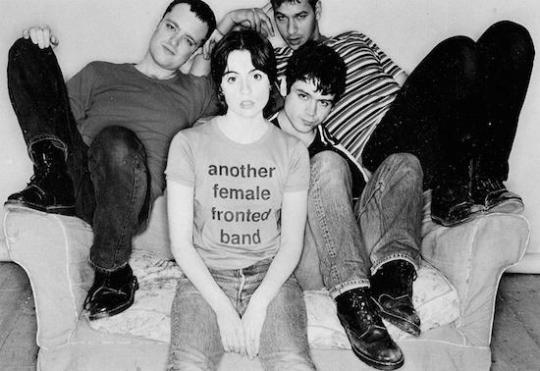
#50: “Inbetweener” by Sleeper (1995)
One thing I love about Britpop is its fondness for character vignettes. Pulp were masters of this, and Blur occasionally dipped their toes in that pool, but even the B-listers knew how to nail a depressed-suburbanite character study.
“Inbetweener” tells the story of a married couple who settled for each other. They weren’t each others’ first-choices, they were just supposed to be “inbetweeners.” By the time they’ve settled into adulthood, their lives have descended into complete boredom, but they’re also too lazy to change anything. It’s the black hole of mediocrity.
Sleeper does a stellar job making the story pop, with a sunny sound to balance out lead singer Louise Wener’s deadpan vocals. In a way, it’s a bit ironic that a pop-rock song with a chorus this anthemic would be about the most boring lives imaginable, but I imagine that was sort-of the point.

#49: “When I Come Around” by Green Day (1994)
Bay Area legends Green Day went 100 percent into the pop side of pop-punk with the infamous graduation anthem “Good Riddance.” But I’ll always prefer their earlier, snottier side, which balanced the two genres perfectly.
“When I Come Around” is a song so maddeningly catchy that it doesn’t even matter that drummer Tre Cool utterly fails to stay on beat, occasionally slowing down and speeding up. Thank god for Billie Joe Armstrong’s timeless melody and crunchy guitar tone, both of which keep this song afloat, along with a solid slap-bass.
Honestly, the amateur vibe of “When I Come Around” is endearing nearly 25 years later, when most mainstream rock feels aggressively focus-grouped. Even Green Day would become much more polished later on (not that this was always bad), so it’s nice to see the youthful energy and passion on display.

#48: “Jesus Freak” by DC Talk (1995)
There were many subgenres that peaked in the ‘90s that I’ve already mentioned, but there’s one more movement that had its prime years in this era: Christian rock.
...wait, wait, don’t click away yet! I’m not trying to proselytize here — some ‘90s Christian music could pass as the real deal. A few, like Jars of Clay, even notched a mainstream hit. But no Christian rock band was bigger among the youth-group set than DC Talk, who never really crossed over to secular audiences. And their signature song, “Jesus Freak,” is absolutely ridiculous — and that’s what makes it great.
Christian music in the ‘10s is mostly bland and focus-grouped to death. If you can tell one Hillsong or Lauren Daigle tune apart from the next, you have better ears than I. But “Jesus Freak” was a strange beast. Instead of joy or thankfulness, its primary emotions are defiance and rage. They even worked with the same music video director as Nine Inch Nails! Amy Grant would never. (although she certainly had her mainstream pop sellout moment in the ‘90s)
Does “Jesus Freak” have some embarrassing lyrics about John The Baptist’s belly? Of course. Does it blatantly rip off “Smells Like Teen Spirit?" Definitely. But, most importantly — is it a banger? HELL (err...heaven) YEAH.

#47: “Vapour Trail” by Ride (1990)
Shoegaze is definitely a sound that I respect more than I actually like. Personally (as you’ll see later on this list), I prefer its more structured, catchier cousin, dream pop.
But Ride managed to find the sweet spot between My Bloody Valentine and top-40 with their sweetly melancholy “Vapour Trail.” It definitely has all the hallmarks of shoegaze — it’s very spaced-out, the lyrics are both romantic and depressing, and there’s a definite wall-of-sound feel to it — but there’s also an actual hook. Thanks to its jangly guitars and orchestral coda, it almost feels like The Smiths’ take on the subgenre.

#46: “Enter Sandman” by Metallica (1991)
Why yes, I am that loser that’s never been able to get into metal, yet loves the simpler pleasures of “Enter Sandman.” What can I say — it’s a total jam and the hooks are plentiful.
It’s honestly kind of hilarious that this song became a massive success right as R.E.M. and Nirvana were rapidly shifting what popular rock sounded like, because “Enter Sandman” leans much heavier towards cheesy, over-the-top hair metal than grunge. I can’t get enough of James Hetfield hamming it up on the mic, literally cackling like a Disney villain at a few points.
For me, the corniness is part of the fun here, along with the raw energy that the band brings to the song. “Enter Sandman” let the masses headbang along with the metalheads, and for that, I’m grateful.

#45: “...Baby One More Time” by Britney Spears (1998)
Here’s proof of how massive Britney Spears’ debut single was: I was in preschool when it was released, and I knew it just as well as the Sesame Street or Arthur theme songs at the time. “...Baby One More Time” was a staple of Radio Disney, which was my main exposure to non-Christian music before elementary school (that, and Thriller, of course). Those opening piano stabs were etched into my brain from a very early age.
There’s a good reason it’s stuck with me: Britney’s breakthrough smash is a pop classic. “...Baby One More Time” captures the passion of a teenage crush better than almost any song from its era. And Max Martin’s crystal-clear, melodramatic production is untouchable. Frankly, it might still be Britney’s best song, over 20 years later.
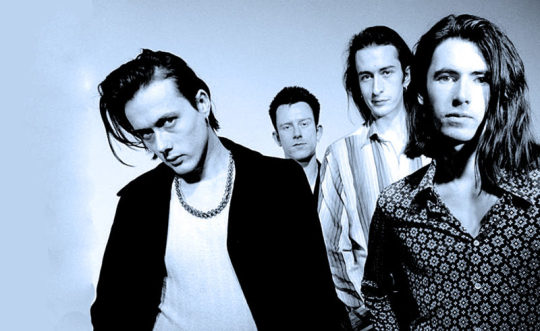
#44: “Animal Nitrate” by Suede (1993)
One of the first major Britpop anthems, “Animal Nitrate” is a swaggering, cocky ode to the UK’s finest glam rock. Marc Bolan would’ve killed to write something this seedy and catchy.
In a way, it serves as sort of the mid-point between Blur and Pulp’s winking snark and Oasis’ hard-charging stadium-fillers. Just add a nice dose of sleaze. Suede weren’t able to keep up the momentum from their landmark debut, but at least they have classic singles like “Animal Nitrate” that cemented their legacy as pioneers.

#43: “Born Slippy .NUXX” by Underworld (1996)
I’m not normally a fan of super-long electronic songs. In fact, this will be the only representative of electronica — a fairly popular scene in the late ‘90s — to show up on this list.
But “Born Slippy” is special. First off, to be completely honest with y’all: I’m a bit biased, since the track was famously featured in Trainspotting, one of my favorite ‘90s movies. So it was always going to have positive connotations for me. Beyond that, “Born Slippy,” more than any other classic electronica song of its time, is bonkers. After a long, atmospheric intro, it’s essentially five and a half minutes of rambling, drunken chaos over a thudding drum beat (with one little break in the middle).
It’s both minimalist (a good chunk of the song is just a drum machine and chanting) and maximalist (IT’S SO LOUD). “Born Slippy” is the audio equivalent of losing your mind, and I love every second of it.

#42: “Groove Is In The Heart” by Deee-Lite ft. Q-Tip (1990)
And here’s a dance song with the complete opposite vibe! While Underworld turned their thumping beats into cold, confusing chaos, Deee-Lite only has one mission with their classic one-hit-wonder: to soundtrack the greatest party of all time.
“Groove” just about succeeds in that goal, too. The bassline and clattering percussion are untouchable, the lyrics are pure nonsense in the best way (more dance songs should throw in Dr. Seuss references), and the group even snagged funk legend Bootsy Collins to throw in some random ad-libs here and there.
Q-Tip, a budding legend in his own right, contributes a nice verse, but the real draw here is Deee-Lite’s aggressive quirkiness. Where else will you find a dancefloor filler that includes slide-whistle solos?

#41: “This Is How We Do It” by Montell Jordan (1995)
New Jack Swing — the subgenre that mixed R&B smoothness with hip-hop beats and attitude — might have peaked in the late ‘80s and early ‘90s, but its best track came way after its pinnacle.
“This Is How We Do It” will always be an effective crowdpleaser. Somehow, Montell Jordan found a way to balance street smarts with a squeaky-clean jam perfect for a Bar Mitzvah. He essentially perfected Will Smith’s formula, but Jordan had an extra advantage: his golden vocals. Yeah, his rapping is a bit corny, but you can’t deny that voice.
The ‘90s had plenty of gangsta-lite party jams like “This Is How We Do It,” but thanks to Jordan’s charisma and a deathless chorus, this one stands above the rest.

#40: “Movin’ On Up” by Primal Scream (1991)
If you’re going to rip off the Rolling Stones’ “You Can’t Always Get What You Want,” you might as well go for the jugular and only steal its massive ending.
“Movin’ On Up” is absolutely shameless in that regard, but I’ll be damned if it isn’t effective anyways. This gospel/classic-rock pastiche is four minutes of straight euphoria: Uplifting lyrics! Jazzy piano! Soaring guitar solos! And of course, a gospel choir so powerful that their voices break through the noise like the Kool-Aid Man.
Primal Scream were smart enough to let the choir take over the second half of the song, just letting the vaguely-religious vibes ride itself out. Because of this brilliant decision, “Movin’ On Up” is somehow more danceable than the rest of its album, the acid-house landmark Screamadelica.

#39: “Just A Girl” by No Doubt (1995)
Riot grrrl, an aggressively feminist brand of indie rock, was an important ‘90s subgenre, but rarely a commercially successful one. Still, there were some acts that polished up that style of angst and packaged into something different yet still great, and one of them was No Doubt.
Although Gwen Stefani might be more well-known to most millennials for teaching us all how to spell bananas, her best song might still be “Just A Girl.” It’s a pretty simple concept — woman is righteously upset by how society coddles her because of her gender — but Stefani sells with her flexible vocals and loads of personality. She shifts from an exaggerated Betty Boop pastiche to a Californian alt-rock wail within seconds.
The rest of No Doubt are able to keep pace with their frontwoman, bouncing back and forth between the springy verses and mosh-friendly, speedy choruses. It’s a good fit for Stefani’s manic energy, and a nice burst of bright energy to bring a close to a dreary era of rock.

#38: “Ruff Ryders’ Anthem” by DMX (1998)
Forget shiny suits: If I’m listening to late ‘90s hip-hop, I’ll take the rawer pleasures of DMX every day of the week.
On his breakout hit “Ruff Ryders’ Anthem,” DMX began to hone his now-legendary untamed style, although it’s a bit more subtle than how he would sound a few years later. It’s not quite as bombastic, but in some ways, that makes this feel a little more like the real X. It literally sounds like a mobster making threats, and it just happens to rhyme and be over a killer beat.
There’s all the ridiculous lyrics you’d expect from DMX here — highlights include the wonderfully emo couplet “All I know is pain/all I feel is rain” and a coda that’s simply a machine gun firing and X yelling “TALK IS CHEAP, MOTHERFUCKER!!!” But for the most part, it’s proto-DMX, and it’s interesting to see a larger-than-life figure somewhat grounded.
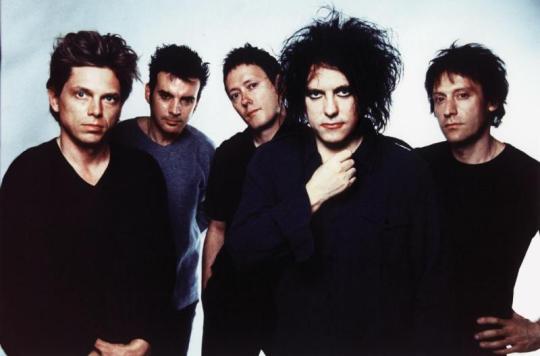
#37: “Friday I’m In Love” by The Cure (1992)
The first couple years of the ‘90s are flooded with awkward ‘80s leftovers, but one wonderful (and very ‘80s) song that snuck into the next decade is “Friday I’m In Love,” The Cure’s final hit.
It’s shocking that something this bouncy, simple and optimistic came out the same year Nirvana and Pearl Jam dominated the airwaves, but great music can succeed at any time. Robert Smith’s nursery-rhyme melodies and lyrics are so simple that it’s shocking that this song wasn’t actually written ages beforehand.
And it’s refreshing to hear a band famous for getting angsty pull out a happy-go-lucky love song tailor-made for romantic comedies. At some point, Smith had to write an upbeat song, right?

#36: “Everlong” by Foo Fighters (1997)
There’s an argument out there that “Everlong,” written by Foo Fighters frontman and former Nirvana drummer Dave Grohl, is better than any Nirvana song. I cannot remotely agree (spoiler: Nirvana places much higher on this list), but I can understand why “Everlong” has such a strong reputation.
Easily the best Foo Fighters song, “Everlong” is everything you’d want in a radio-friendly alt-rock single. It’s catchy, but still has some legitimate grit and bite. Propulsive and anthemic, yet still angsty and relatable. Grohl somehow took a grimy post-grunge banger, added romantic lyrics, and made it work. I certainly can’t imagine Bush or Everclear pulling that off.
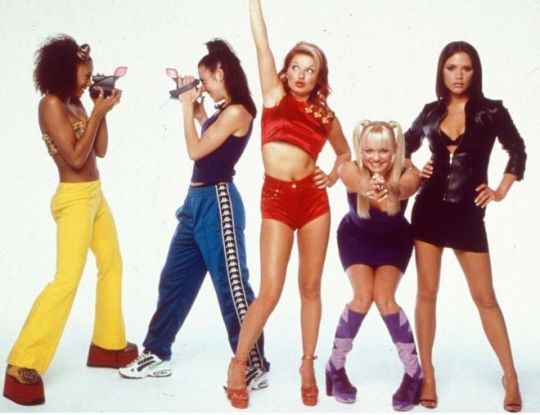
#35: “Wannabe” by Spice Girls (1996)
In less than three minutes, five British women kicked down the doors of alt-rock and birthed the late-’90s bubblegum pop boom with one song. And what a glorious burst of energy that song is.
"Wannabe” might be the most purely fun song on this entire list. From the springy piano beat to each of the five girls showing off their bold, feisty attitudes (except for Posh Spice...sorry, Victoria), to Scary and Ginger Spices’ cheeky rap breakdown at the end, it’s impossible not to like. The song is a bit repetitive, yes, but when you have nuclear-grade weapon hooks like these, you might as well use them. ZIGAZIGAHHH

#34: “Fake Plastic Trees” by Radiohead (1995)
And now to the exact opposite side of British music!
Not to be that annoying contrarian, but I’ve never been able to get into Radiohead. A lot of their music is too cerebral for my tastes — I don’t mind thoughtful lyrics or experimentation, but I need a hook or a groove to grab onto.
Still, I do have a fond spot for their early years. And “Fake Plastic Trees,” my favorite song of theirs, is the perfect midpoint between grunge angst and sweeping Britpop balladry.
The lyrics are abstract, yet Thom Yorke’s yearning, cracked vocals convey more than any words could’ve. Like one of my favorite modern acts, Japanese Breakfast, his voice acts simply as another instrument to convey the heartbreak. Match that with a slow-burn power ballad fit for a rom-com credit roll, and you’ve got an instant classic. It’s really too bad Radiohead got bored with this sound...

#33: “It Was A Good Day” by Ice Cube (1992)
Ice Cube is not normally a happy guy in his classic songs. Whether he’s pissed at the cops or his former bandmates, he’s usually in a bad mood for some reason. But for his most beloved track, Cube imagines what a day with no problems would be like, and it’s sublime.
He nabs a triple double on the court without trying. He gets to bang a chick he’s been trying to have sex with since high school. He seemingly wins every game of bones and craps he plays. And most importantly, the police and gangs didn’t hassle him.
Many gangsta rap songs are about turmoil and chaos, but “It Was A Good Day” shows that even the toughest thugs just wanted some peace and to have a good time.
(although if it was a really good day, the Supersonics would’ve beaten the Lakers...)
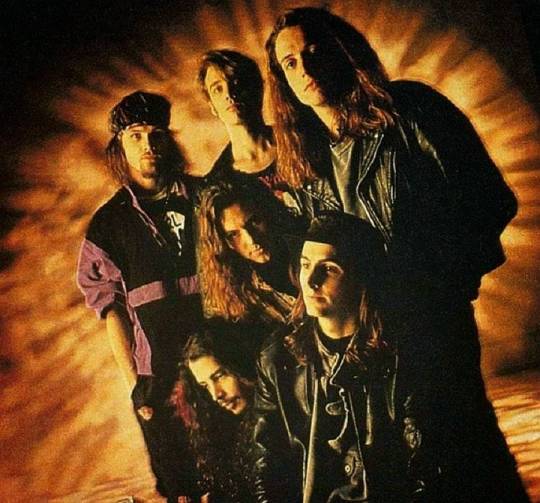
#32: “Hunger Strike” by Temple of the Dog (1991)
This song is so Seattle that the CD single probably came with a complimentary damp flannel, a Dick’s deluxe, and coffee stains.
It’s a bit surprising to me that there hasn’t ben any Seattle artists on the list proper yet, seeing as the city was the epicenter of ‘90s culture. Obviously, grunge played a role, but this was also the decade when Starbucks, Microsoft and Amazon blew up; the decade when the Sonics and Mariners had superstars like Gary Payton and Ken Griffey, Jr. (the Seahawks had to wait another decade to hit their stride); the decade where the Emerald City’s reputation changed from South Alaska to one of America’s iconic locales.
And before Nirvana and Pearl Jam took led that charge, “Hunger Strike” was the first grunge breakthrough, and for good reason. In a way, it’s sort of the Watch The Throne of grunge, with Chris Cornell and Eddie Vedder exchanging vocals. The chorus, when Vedder sings the hook while Cornell bellows “I’M GOING HUNGRAAAAAAAAAAAY” like a madman, gives me goosebumps every time.
Honestly, I like this lighter-waving ballad more than any of Pearl Jam or Soundgarden’s actual songs. Not sure why this connects with me more — perhaps it’s the four minutes of raw emotion and wailing vocals over gorgeous harmonizing guitars. Vedder and Cornell work shockingly well together, too. I wish the duo made more music.

#31: “Connection” by Elastica (1994)
There is no Britpop song that’s cooler than “Connection.” While most of the subgenre is all about wink-wink cleverness or gigantic classic-rock riffs, Elastica dispenses with both of those for Justine Frischmann’s snarling attitude.
Elastica kept things very simple on their most iconic single. There’s a rudimentary guitar riff (which yes, they stole from Wire, but who cares), a steady beat, and Frischmann rolling her eyes over the whole thing. “Connection” is not a song that needs a lot of explaining: one listen, and you’ll instantly understand why even American teens couldn’t resist the snark.

#30: “Alison” by Slowdive (1993)
Slowdive’s masterpiece, Souvlaki, might have been a bit late to the shoegaze party by 1993, but it and its iconic leadoff track, “Alison,” have stood tall over the movement regardless.
My favorite shoegaze song, “Alison” is a hazy soup of distorted guitars, hypnotic drums and hopelessly romantic lyrics about a druggy (and possibly imaginary?) relationship. About half of the lines are about drugs and confusion, and lead singer Neil Halstead describes the titular woman as his anchor through the chaos of life. It’s a slow-dance made for a goth prom, and it lingers in your brain long after it’s over.

#29: “Baby Got Back” by Sir Mix-a-Lot (1992)
“Baby Got Back” has unfortunately become sort of a punchline by this point. Not because it’s a clunker —I think most people seem to love it as much as I do — but because of its constant feature in kids’ movies (I first heard it in Shark Tale as a child...the early ‘00s were a strange time) and the fact that the song has been boiled down to just a few lines.
“I like big butts and I cannot lie.” “Oh. My. Gawd. Becky, look at her butt.” “My anaconda don’t want none unless you’ve got buns, hon.” Those moments define “Baby Got Back” more than anything else.
Which is a shame, because it’s a masterpiece of trashy fun. Seattle icon Sir-Mix-a-Lot somehow found out how to make solid punchlines about booty for four minutes — you try coming up with that many iconic moments in a short timespan! And the dizzying production, with its sharp horn bursts and super-tight bassline, is no joke.
"Baby Got Back” might be a goofy novelty track, but there’s actual effort put in. It’s a formula more artists should strive for.
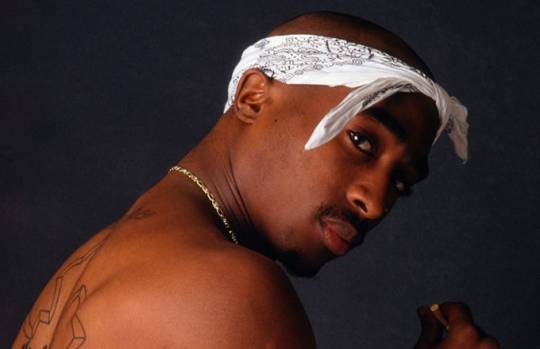
#28: “California Love” by 2Pac feat. Dr. Dre and Roger Troutman (1995)
Yes, this is the cliché 2Pac choice. But “California Love” is difficult to resist.
Backed by a rowdy Dre beat (and a great opening verse from the Dr. as well), Pac’s comeback single after being released from prison is truly timeless. You go to any L.A. party or sporting event and it’ll inevitably be played (partly because it’s strangely clean for a gangsta rap anthem). And 2Pac is game to shout out the entire state — he even gives Sacramento props over 20 years before Lady Bird!
Pac has some deeper, more introspective songs than “California Love.” But sometimes, the basic pick is the right one.
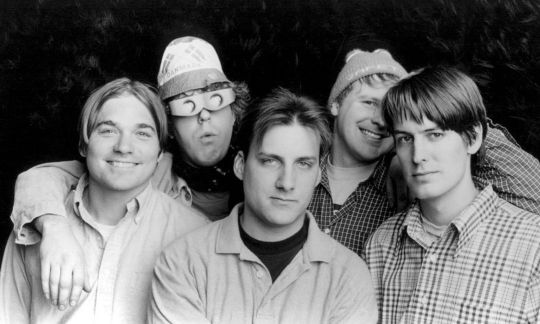
#27: “Summer Babe (Winter Version)” by Pavement (1992)
Pavement has always been the cool kids’ ‘90s band. While the massive alt-rock acts put their raw, bleeding-heart emotions on display, Pavement kept things sardonic and snarky. They were willing to poke fun at The Smashing Pumpkins. They’re essentially the Jim Halpert of rock — kind of lazy and self-removed, but with too much charisma to ignore.
Yet, for all their snarky bonafides, my favorite song of theirs is one of their more emotional. “Summer Babe” still features Stephen Malkmus’ famously flat, dry vocals, but the song has some real heft to it regardless. The deep-fried guitar shredding its way though the track and the noisy drums work well amongst the sloppy-but-charming sound. It’s meandering, but when Malkmus puts some juice in his vocals for the final minute, it still strikes a chord.
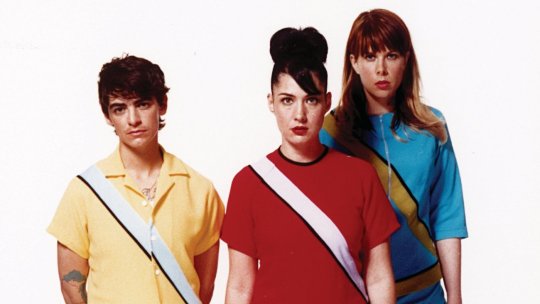
#26: “Deceptacon” by Le Tigre (1999)
By the late ‘90s, punk icon Kathleen Hanna had already moved on from her massively influential riot grrrl band, Bikini Kill. Distorted guitars were so 1992. What was next? ‘80s nostalgia, of course!
“Deceptacon,” by Hanna’s other famous band, Le Tigre, is a sizzling slice of new wave perfection. With its proudly-analog synth stabs and dance beat, the song perfected the indie-band-goes-disco formula 10 years before everyone else tried it. Seriously, this sounds way more like 2009 than 1999, and it’s shocking that its somehow from the 20th Century.
But “Deceptacon” isn’t purely a Duran Duran tribute — there’s still that same fury that Hanna was famous for. Her raw vocals make for a strange, yet captivating combination with the poppy beat. It’s a punk song you could dance to, just like the Ramones always wanted!

#25: “Fantasy (Bad Boy Remix)” by Mariah Carey feat. Ol’ Dirty Bastard and Puff Daddy (1995)
There might not have been any ‘90s popstar bigger than Mariah Carey. She racked up 14 number-one hits, including “One Sweet Day,” a monster R&B collaboration with Boys II Men that is still tied for the longest stay at the top of the charts (if only it was a better song).
However, she’s never been my favorite — overwrought R&B ballads really aren’t my thing. But she did release one single that I unabashedly love, and that’s partly due to an assist from one of hip-hop’s weirdest stars.
I’m still not sure why the powers that be felt that Carey, a super-polished pop balladeer, and Ol’ Dirty Bastard, a rapper who sounded and acted like a homeless man on bath salts, was a good combo. But it worked beautifully! ODB’s weirdo charm proved to be a nice balance to Carey’s more sanitized sound. And the pop structure reigned in ODB just enough — although that didn’t stop him from spending the first 45 seconds just shouting out random places (“JAPAN ARE YOU IN THE HOUSE?!?”) and later quoting Donny and Marie Osmond. The man was a maniac.
But arguably what makes the song work better than either artist’s contribution is that sparkling production. The remix of “Fantasy,” helmed by Bad Boy mastermind Puff Daddy, strips back the original song’s heavier sampling of the ‘80s classic “Genius of Love” to just the groovy bassline for most of the song, letting the synth burbles wait until the chorus to pop. The result is one of the few truly great American pop songs of the mid ‘90s.

#24: “Blue Jeans” by Blur (1993)
Despite their relatively low placement on this list, Blur are my absolute favorite band of the ‘90s. They helped create one of its prominent movements, Britpop, with their 1992 single “Popscene,” and went on to dominate the subgenre. And when they got bored with that sound five years later, Blur proved they could do angsty, distorted alt-rock just as well as the Americans. (And five years after that, lead singer Damon Albarn started a fun little side project — you might have heard of them.)
But my favorite song of theirs doesn’t really fit into either Blur’s eras. Technically, “Blue Jeans” was released on their first Britpop album, Modern Life is Rubbish, but it doesn’t really have the same witty, uber-English vibe as their hit singles from that time. Instead, it’s a low-key, almost dream-pop song that’s simply about being content in a relationship.
Sounds a bit boring, until you actually listen to the track — Albarn’s melody here is stunningly beautiful, yet down-to-earth, and the quaint music backing him matches the vibe of the song exactly. And his lyrics nail the early stages of love — “I don’t really wanna change a thing/I wanna stay this way forever.” There’s few songs that capture the simple joys of a romance like “Blue Jeans,” particularly in the honeymoon period.
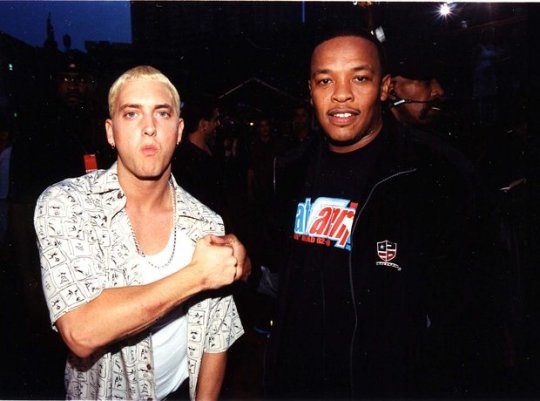
#23: “Forgot About Dre” by Dr. Dre feat. Eminem (1999)
The defining sound of West Coast hip-hop — the squealing synths and trunk-rattling bass of G-Funk — was mastered by one man in the early ‘90s. Dr. Dre’s The Chronic was a landmark for the genre in 1992, and his iconic style can be heard from MCs throughout most of the decade.
But by 1999, things had changed. The biggest names in hip-hop sounded nothing like Dre’s signature sound, from Puff Daddy’s sample-heavy pop-rap to the chaotic Southern twang coming from No Limit Records. Dre was seen as a has-been, a relic.
However, “Forgot About Dre” ended Dre’s slump that year. The funky Chronic beats were supplanted by a sharper-edged, metallic production over which Dre publicly shamed the world for ignoring him and his legacy. It’s a ballsy move to already anoint yourself as a legend just 11 years after you burst onto the scene, but with Dre’s track record, he could afford to do so. And although he’s not the greatest rapper technically, he spits with enough force and charisma to sell his snarling lines.
Dre also had a partner to give him a boost: the then-newbie Eminem. A lot of Em’s big 2000′s hits have aged badly in my opinion — the production is awkward and there’s too much homophobia — but he sounds sharp as hell on “Forgot About Dre.” His verse is arguably the song’s highlight, as he unleashes a rapid-fire, charmingly random verse with endlessly quotable lines.
“Forgot About Dre” cemented Dre’s status as a titan of the industry who could seemlessly create new trends and stay afloat through multiple decades. And with it being one of Eminem’s breakout moments, it also proved Dre could be a kingmaker.

#22: “You Oughta Know” by Alanis Morissette (1995)
The ‘90s were the decade of angst. So what better climate was there to release a scathing takedown of an ex, who may or may not be one of the dudes from Full House?
Okay, so it’s never been confirmed that “You Oughta Know” is actually about Dave Coulier. But that doesn’t lessen its rage and impact. Morissette is seething with rage about this breakup, writing all-time classic lines like “Does she know how you told you’d hold me until you die/’Til you die, BUT YOU’RE STILL ALIVE” and of course, “Are you thinking of me when you fuck her?!”
Morissette perfectly uses the era’s classic quiet-loud dynamic shifts to her advantage, creepily whispering at the start of the verses, and slowly growing louder and angrier until she’s screaming her lungs out by the chorus. Her ragged, off-kilter vocals perfectly capture the blinding emotion she feels. It’s a karaoke staple for those who’ve just been dumped for a good reason.

#21: “Big Pimpin’” by Jay-Z feat. UGK (1999)
That Timbaland beat. Dear lord. How can it sound so good against three radically different flows?! The man is truly a genius.
Yeah, Hov and Bun B and Pimp C all deliver here too, but let’s not pretend that beat isn’t the reason why this is a top-shelf Jay-Z single.

#20: “Larger Than Life” by Backstreet Boys (1999)
Yeah, it’s better than “I Want It That Way.” Not by a lot — they’re both perfect — but I’ve always preferred upbeat boy band songs to ballads.
“Larger Than Life” was named accurately. From the second the thumping beat kicks in, the song is a stadium-filling anthem, the kind arena-rock bands would’ve written a decade prior. Does it have a chorus that’s easy to scream along to at concerts? Check. Does it have a beat you can awkwardly groove to? Check. Does it have a bad-ass guitar solo thrown in? Shockingly, yeah.
Boy bands were the true rockstars of the late-’90s (apologies to, uh, Matchbox 20?), so it would only make sense to have one of them create a bonafide rock anthem. And when you match the Backstreet Boys’ sugary hooks with a roaring atmosphere worthy of Def Leppard, you’ve got a classic on your hands.

#19: “The Fly” by U2 (1991)
‘90s U2 is the best U2. I love Joshua Tree and Unforgettable Fire as much as the next guy, but I’ll take their weirdo, aggressively-ironic decade over their more earnest years any day.
Perhaps no song encapsulates U2′s ‘90s ethos better than “The Fly.” It’s got a slinky, nocturnal feel to the music, with The Edge’s guitar distorted slicing through like a machete. The swirling, tripped-out guitar solo here might be his greatest ever.
But like many U2 songs, “The Fly” belongs to Bono. In it, he plays the titular sleazebag from hell (literally — the song is about a crank call from down there), whispering sweet nothings into the listener’s ear. Do the lyrics actually mean anything? Honestly, I’m still not sure, but they still somehow sound transgressive and witty, if a bit corny. But you’ve got to expect a little corn when U2 is involved. And when Bono duets with himself on the sublime chorus, both as The Fly and in a piercing operatic falsetto, it’s one of the best hooks of the band’s career.
“The Fly” was the world’s introduction to the new U2 in 1991, and although it might have shocked people expecting another “With Or Without You,” it’s aged beautifully over 25 years later.

#18: “Heaven Or Las Vegas” by Cocteau Twins (1990)
Cocteau Twins are usually held up as dream pop’s forefathers, helping create a distinct, hazy sound that would inspire future artists from The Cranberries to Beach House to Washed Out. One listen to “Heaven Or Las Vegas” proves why the Scottish trio was such an inspiration.
“Heaven Or Las Vegas,” the title track to Cocteau Twins’ flawless 1990 album, is one of the most immaculate, gorgeous songs of the decade. Invoking both heaven and Las Vegas was accurate: the track is graceful, yet also drenched in neon synths and glitz. It perfectly toes the line between holiness and kitsch.
And here’s where I admit that, like most people, I can’t make out 90 percent of what vocalist Elizabeth Fraser is singing. Beyond belting out the title of the song in the chorus, the rest sounds like French, or speaking in tongues. Regardless, her ethereal alto is a perfect compliment to the swirling keyboards and gauzy guitars floating around her in space.

#17: “All The Small Things” by Blink-182 (1999)
In the classic video for “All The Small Things,” Blink-182 spends the entire runtime clowning on the TRL-era boy bands of the time. Here’s the ironic thing about that video: “All The Small Things” is secretly the greatest boy band song of the ‘90s (yes, that means *NSYNC didn’t make the list...their best songs came out in the early aughts, sorry).
Blink-182 are technically a pop-punk band, not a boy band, but you wouldn’t really know that from their most iconic, and best, hit. “All The Small Things” is direct, punchy and has a monster sing-along chorus. Sure, Tom DeLonge’s nasal whine isn’t a typical teen heartthrob voice, but young Justin Timberlake had an unusual voice too (“IT’S GONNA BAY MAAAAE”).
The fact that “All The Small Things” is basically a bubblegum Trojan horse for Hot Topic kids is exactly what makes it so great. Chugging guitars can peacefully coexist with a TRL-ready melody and surprisingly romantic (if simple) lyrics.
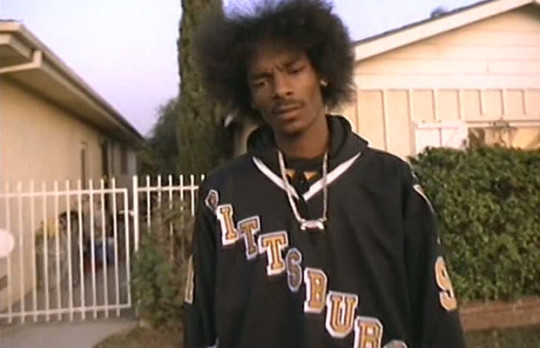
#16: “Gin & Juice” by Snoop Doggy Dogg (1993)
Nowadays, Snoop Dogg is probably more known for his intense love of weed, unwillingness to turn down collaborations, and friendship with Martha Stewart more than any new music. But Snoop’s earned the right to ease into being a hip-hop elder statesman, thanks to his landmark album Doggystyle and its standout single, “Gin & Juice.”
The young Snoop (only 22 at the time!!) had already nailed down his trademark, chilled-out drawl by 1993. He uses it to great effect on “Gin & Juice,” describing a wild house party filled with sex, drugs and alcohol like it’s just another regular day at the office. You can practically hear his knowing smile in the verses, and the chorus sung by D-Ruff is infectious as hell.
Of course, major credit has to be given to Dr. Dre’s G-funk production. It’s my favorite beat of his from this era, and its dog-whistle synths and shuffling beat perfectly fit the early-’90s California party vibe.

#15: “Semi-Charmed Life” by Third Eye Blind (1997)
This is probably the only song in history to take heavy lyrical influence from the Doug theme song and simultaneously be about crystal meth.
It shouldn’t be hard to explain why “Semi-Charmed Life” is a classic, right? It turned an insanely bleak topic into one of the sunniest, most propulsive jams of all time. The rap-singing in the verses is a blast to keep up with, and that falsetto “goodBYYYYYYYE” in the chorus is the ‘90s equivalent of the high note in “Take On Me”: often-attempted in karaoke, with a very low success rate.
The late ‘90s had no shortage of great, weird pop jams, and “Semi-Charmed Life” is near the top of the pile.

#14: “Say It Ain’t So” by Weezer (1994)
My favorite ‘90s album will always be Blur’s Parklife. But my second choice would probably be Weezer’s self-titled “Blue Album,” a nerdy power-pop masterpiece. It’s an angstier mirror of The Cars’ 1976 debut, also self-titled; appropriate, seeing as Cars frontman Rik Ocasek produced Weezer’s first album.
The record’s centerpiece is the heartbreaking “Say It Ain’t So,” a perfect power ballad. The band nails the quiet/loud/quiet dynamic shifts from the mumbling verses to the supercharged chorus. There, Rivers Cuomo scratches his vocals, displaying his emotional wounds after alcoholism tore apart his family.
For a band known for very silly songs like “Buddy Holly” and “Beverly Hills,” the passionate bridge, where Cuomo first wails away vocally before making his guitar do the same in a fiery solo, is truly heartbreaking. “Say It Ain’t So” proved that California dorks could pull off sadness just as well as the flannel-wearing Seattleites, if not better.
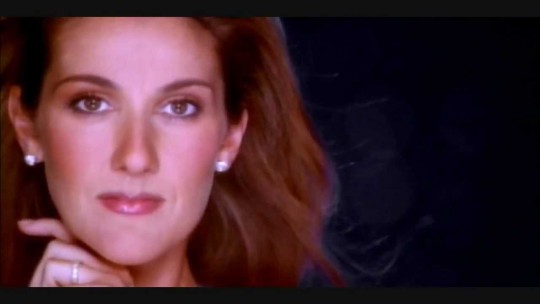
#13:��“My Heart Will Go On” by Céline Dion (1997)
Earlier this year, Avengers: Endgame moved past Titanic on the all-time box office charts. As much as I enjoyed Endgame, this feels wrong. Sure, Marvel is a big deal, but was Endgame as much of a phenomenon as Titanic? No. Frankly, it’s not even a top-5 Marvel movie (although it is better than Avatar, which Endgame could pass soon for first place).
Why has Titanic cemented itself in pop culture history? Part of that is because the movie is a stone-cold classic, featuring a frothy romance between two of a generation’s greatest actors that ends in unspeakable tragedy and heartbreak. But I believe there’s another aspect to the film that’s helped keep its legacy strong: its unsinkable theme song.
“My Heart Will Go On” is one of the greatest movie themes of all time, precisely because it mirrors its movie. Like Titanic, Céline Dion’s signature song starts as a tender, soft romance, before bursting into a dizzying climax that pummels the audience into submission, forcing tears.
I don’t think I need to emphasize that Dion is a fantastic singer — there are very few singers that could nail both the cooing opening and the Whitney Houston-esque belting at the final chorus. But “My Heart Will Go On” is still occasionally considered a punchline, and that’s just wrong. Any song with this much emotional heft and force cannot be taken lightly.

#12: “What’s The Frequency, Kenneth?” by R.E.M. (1994)
Two of Gen X’s longest-lasting and most important acts, U2 and R.E.M., switched roles in the ‘90s. U2 shifted their image from overly-earnest arena-rockers to weirdos dabbling in underground sounds. Meanwhile, their American counterparts went from mumbling college rock jams to radio-friendly ballads.
Not to be a total snob, but I’ve always preferred R.E.M.’s jangly ‘80s sound over their blockbuster early ‘90s albums. But the lead single off their underrated 1994 record Monster might be my favorite song of theirs.
“What’s The Frequency, Kenneth?” sounds like very few other R.E.M. songs. There’s no mandolins, and Michael Stipe’s lyrics are much clearer (although they make little sense). Instead of being bouncy and light, the guitars are a blast of crunchy distortion, not far off from a typical Smashing Pumpkins song.
In fact, Peter Buck’s guitar work here is what makes “Kenneth.” His echo-y sound adds a raw texture to the tune. And although the lyrics are a bit cryptic (apparently it’s about Boomers trying to advertise to Gen Xers? I have no clue), Stipe’s melody is on-point, as usual.
Although the sound of alt-rock had long passed by R.E.M.’s original style, “Kenneth” showed that the Georgia legends were more than able to keep up.
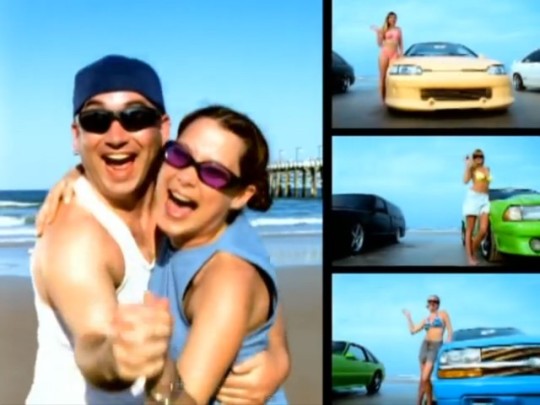
#11: “Steal My Sunshine” by Len (1999)
This sunburnt ode to being young and dumb in the gloriously young-and-dumb late ‘90s is the greatest summer anthem of all time. And the greatest one-hit-wonder of all time.
“Steal My Sunshine” is the soundtrack to driving with the windows down, goofing with your friends and pretty much any positive aspect of summer. Gloriously dumb and kitschy-fun summer songs like this are perfect examples of why the late-’90s was a golden age for pop.

#10: “Man! I Feel Like A Woman!” by Shania Twain (1997)
While we’re talking about that late-’90s pop boom, how crazy is it that the era’s best single is technically a country song?
Of course, “Man! I Feel Like A Woman!” is barely a country song — yes, there’s some violins and slide guitar buried in the mix, but there’s also a thundering synth riff and Twain barely has a Southern twang (makes sense, seeing as she’s Canadian). And there’s no mention of any country tropes like pickup trucks or whiskey in the lyrics.
What “Man!” does bring to the table is a tongue-in-cheek, groovy pop-rock jam that’s just as easy to love as it is to make jokes about. Sure, it’s corny as hell — see the obvious joke in the song’s title — but Twain is clearly having way too much fun to care. And in a decade filled with angst and irony, a super-cheesy pop jam like this probably seemed like a needed salvo.
And the Mutt Lange production on this has some serious oomph to it. Before his extensive work with Twain, his then-wife, Lange was arguably best known for mastering the roided-out arena rock sound of the ‘80s, assisting on classic tunes from The Cars, AC/DC and Def Leppard. He even gave us this beautifully ridiculous Billy Ocean track, which might be the greatest song ever written. Lange brings some weight to “Man!”, making Twain’s female-empowerment anthem an actual anthem.
Listen, if this song isn’t for you, I get it. But for those of us who have the prerogative to have a little fun, “Man! I Feel Like A Woman!” is the pinnacle of one of pop’s greatest eras.
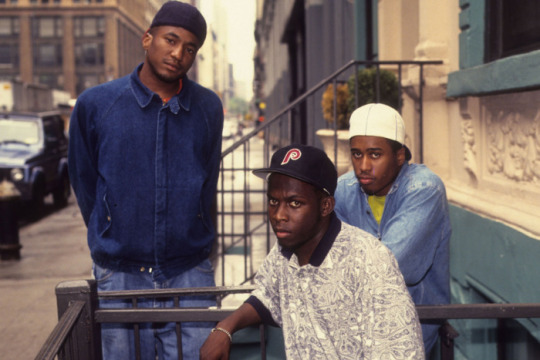
#9: “Check The Rhime” by A Tribe Called Quest (1991)
A lot of ‘90s rap hasn’t aged well, even if it’s still a ton of fun. Albums from Dr. Dre and Puff Daddy and even Jay-Z can sound like time capsules. But that’s not a problem that A Tribe Called Quest has, as their smooth jazz-rap still sounds timeless and perfect.
“Check The Rhime” is the Queens group’s brightest highlight off of their 1991 magnum opus, The Low End Theory. It’s a simple setup: MCs Q-Tip and Phife Dawg introduce the other rapper by reminiscing about freestyling on street corners back in the day. Then, both Tip and Phife get their own verse, each stuffed with playful lines and life advice — Industry Rule 4080 still holds to this day.
Unlike a lot of ‘90s hip-hop that was trying desperately to either be menacing or cool, Tip and Phife ooze effortless charisma on their verses in a playful, almost childlike way. Phife starts his verse reminding everyone “how nice I am” (before proclaiming that he flips off “punk MCs”). Tip even seems to diss MC Hammer by saying “rap is not pop/if you call it that then stop,” but apparently, this was meant as a defense of the then-megastar. Maybe.
“Check The Rhime” works partially because of its funky, minimalist production, but also because the Tribe’s two rappers were born to spit non sequiturs and awkward brags over a jazz-rap beat until the end of time.

#8: “I Wanna Be Your Joey Ramone” by Sleater-Kinney (1996)
I’m not sure how flamingly hot of a take this is, but I’d say Sleater-Kinney is the greatest band in Northwest history. Yes, better than Nirvana.
1997′s Dig Me Out is a flawless masterpiece, and there’s not a single dud in their eight-album discography. Unlike many of the major Washington acts from this era, the Olympia three-piece never lost relevancy, releasing some of their strongest work in the 2000′s.
But Sleater-Kinney’s best single, “I Wanna Be Your Joey Ramone,” is actually from one of their early albums. And it serves as a thesis statement for the decades of great music to come.
Legendary guitarist Carrie Brownstein takes over vocals here, nailing both the sardonic verses and the thrilling, off-kilter chorus. “Joey Ramone” tackles an interesting subject: how almost all of indie rock’s heroes up to that point had been male. So when Brownstein wails about wanting to be Joey Ramone or Thurston Moore, she’s placing Sleater-Kinney in the pantheon of rock greats. And this was just their second album.
Luckily, Sleater-Kinney had the goods to back up their chutzpah, and “Joey Ramone” became prophetic.

#7: “Supersonic” by Oasis (1994)
Just a couple months after Kurt Cobain’s death, two unibrowed guys from Manchester (and the rest of their band) completely upended the rock world with their band Oasis’ debut album, Definitely Maybe. After a few years of gloom-and-doom dominating the genre, it, along with fellow hit albums from Blur and Pulp, helped usher in the brighter world of Britpop in the mid-’90s.
That album’s first single, “Supersonic,” is still the greatest thing Oasis ever produced. (Yes, it’s better than “Wonderwall.”)
“Supersonic” is a blast of rude, snotty rock-n-roll cranked up to 11. In an era of irony and sarcasm, lead singer Liam Gallagher was spouting out nonsense lyrics like they were the most important and coolest thing in the world. And for the four-and-a-half minutes of this song, they probably are.
Everything about “Supersonic” is boneheaded perfection, from the thunderous drums to the dual guitars, one crunchy, one soaring; all the way to Liam’s sneer. This is prime Oasis, the band running on all cylinders. Based on how ramshackle this sounds, it’s no wonder the band only stayed great for two albums. But at least we’ll always have that legendary start.

#6: “1979″ by The Smashing Pumpkins (1995)
On the opposite end of the cool spectrum as Oasis and Sleater-Kinney, you have Billy Corgan — singer/songwriter/control freak of The Smashing Pumpkins and alt-rock’s most weaselly, petty figure. But say what you want about him as a person, Corgan wrote some incredible alt-rock pop nuggets.
“1979″ is a major outlier in the Pumpkins’ discography. It’s not an angsty shoegaze/grunge banger or an orchestral power ballad. It’s a low-key, skeletal new-wave track that perfectly captures the boredom and aimlessness of youth.
While many songs about being a teenager capture either its euphoric highs or angsty lows, “1979″ is one of the few classic songs that nails the in-between moments. It’s the feeling of walking to the 7-Eleven with your friends, cracking jokes that you’ll probably forget the next day. It’s about sitting in a parking lot and just waiting to leave your hometown.
"1979″ isn’t a grand gesture, but in a backwards way, that makes it even more profound. And from a band who typically dealt in soaring, intensely emotional songs, it was a brilliant change-of-pace that will no-doubt be relatable to teens for a long time to come.

#5: “Rebel Girl” by Bikini Kill (1993)
Two massively important alt-rock movements came from the Puget Sound in the early ‘90s. One is grunge. The other is riot grrrl, centered around a group of furious, political women-led bands in Olympia. And although Sleater-Kinney may be the subgenre’s longest-lasting act, its brightest moment came in 1993 with Bikini Kill and their incendiary single “Rebel Girl.”
Lead singer/songwriter/punk icon Kathleen Hanna is the focal point of “Rebel Girl,” wailing away on the microphone about an unnamed woman who is just the absolute coolest. The woman is described as a confident, revolutionary lesbian figure who would serve as an inspiration for angsty teens across the globe.
And oh yeah — “Rebel Girl” absolutely shreds. It sounds like there’s maybe 18 guitars going at once on the track, and Tobi Vail’s drum work is fearsome. Just to give more rock cred to the song, it was produced and features guitar work from Joan Jett. The rock legend and Bikini Kill made a great pairing, creating a song that sounds angry, with its distorted guitars and punk drums, but is actually a triumphant feminist anthem for the ages.

#4: “Linger” by The Cranberries (1993)
In an early-’90s rock scene filled with distorted guitars and raw angst, The Cranberries broke out in 1993 with a song that sounded nothing like the crowd. And over 25 years later, their stunningly gorgeous single “Linger” has aged far better than most of the grunge and alt-rock it was surrounded by.
The Irish four-piece took inspiration from Cocteau Twins’ and Galaxie 500′s dream pop and just made the hooks even more bulletproof and melancholy. “Linger” is the kind of ballad that’s a perfect fit for a longing prom slow dance and for crying with a tub of Ben & Jerry’s on the couch after a break up.
The late Dolores O’Riordan’s lilting vocals are a miracle here, able to express both hope and resignation. Her heavy Irish accent helps the vocals become another instrument in the band’s sweeping wall of sound, alongside the jangly guitars, marching-beat drums and orchestral swells.
It’s the most beautiful song of an ugly (in a good way!) decade, and arguably the greatest dream pop song ever written. The Cranberries would later adopt the heavy guitars of their Seattle peers, but “Linger” is still a high-water mark for the subgenre.

#3: “Juicy” by The Notorious B.I.G. (1994)
The first verse alone could’ve gotten “Juicy” into this list’s top 10. It’s one of the most-memorable and quotable verses of all time, exquisitely detailing The Notorious B.I.G.’s rise to fame. And then we get two more stellar verses?!
“Juicy” is frequently cited among one of the greatest hip-hop songs of all time, and it’s deserving of that reputation. Biggie penned the definitive rags-to-riches story in just five minutes (honestly, more like four, as he and producer Puff Daddy let the beat ride for a bit at the end) and then blessed it with his silky-smooth, commanding flow.
What separates “Juicy” from other come-up anthems is the vivid detail Biggie gives us, both about his impoverished Brooklyn upbringing (“We used to fuss when the landlord dissed us/No heat, wondered why Christmas missed us”) and his stunning rise to fame (“Girls used to diss me/Now they write letters cause they miss me”). He even brags about owning a Super Nintendo AND a Sega Genesis, which was the biggest early-90′s flex possible.
Of course, knowing the tragic ending of Biggie’s story, “Juicy” has a bit of a bittersweet feeling to it now. But its ‘80′s-retro beat and infectious glee can still bring a smile to my face every time I hear it.
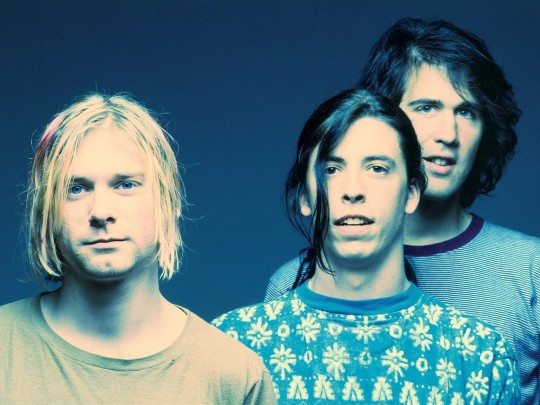
#2: “Smells Like Teen Spirit” by Nirvana (1991)
Well, duh.
There is no song that encapsulates an entire decade and generation like “Smells Like Teen Spirit” does for the ‘90′s and Gen X. It famously changed the entire rock landscape nearly overnight from sleazy hair metal to grimy alt-rock. It’s one of the most famous and iconic songs ever written. And shockingly, it still retains all of its revolutionary power nearly 30 years later.
How does “Smells Like Teen Spirit” pull off the balancing act of being a time capsule, yet still sounding remarkably fresh? I believe it’s because it captures the raw feeling of visceral rage and confusion better than nearly any song. Most angry songs have a target, whether its racist politicians, stuffy adults, or even a crappy ex. “Teen Spirit” has no tangible reason for its angst. Kurt Cobain’s lyrics are famously nonsense. And that’s what makes the song so brilliant.
Because the song is so emotionally powerful in a visceral way, it really doesn’t matter that the lyrics are meaningless. All you need to love the song is to connect with the anger buried deep, and start moshing the moment Dave Grohl’s instantly-recognizable drum fill meets the clanging guitars. It’s a total banger.
Cobain might not have had the intent of creating a generational anthem that would last beyond Gen X. But as long as people feel “stupid and contagious” alongside a creeping rise of angst, waiting to burst, “Teen Spirit” will remain relevant.
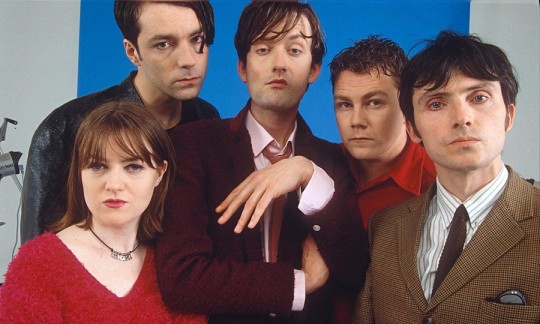
#1: “Common People” by Pulp (1995)
For a subgenre entirely built around a particular country’s culture, most major Britpop acts surprisingly refrained from politics. Oasis never sniffed the subject, and while Blur got close, songs like “Parklife” or “Stereotypes” were more winking jokes than bold statements.
Then there’s Pulp. Their most beloved track, “Common People,” is a scathing attack on the British upper class who indulge in poverty tourism, unaware of how the other half really lives. And it’s the best song of the ‘90s.
There are few things I love more than a perfectly executed story-song, and lead singer/songwriter Jarvis Cocker gives listeners a doozy here. “Common People” is about a rich woman talking to, well, a common person, and she decides she wants the poor guy to show her how to “live like common people.” Cocker’s songwriting is very literary, going into detail about the woman’s history and her botched attempt to act poor while shopping for groceries, as well as all the lower-class problems the wealthy will never understand. As Cocker bluntly puts it, “If you call your dad/he could stop it all.”
“Common People” is just as furious as “Teen Spirit,” but Cocker has clear targets here: the one-percent, and the misguided idea that poverty is somehow cool. The song starts calmly, almost at a whisper, but by the final, heart-pounding climax, Cocker is wailing away, condemning the upper-class with gusto.
The swelling disco-rock groove channels this anger into an absurdly catchy tune — an odd combination of musical tone and lyrics, but one that’s effective. It’s a giant middle finger that you can sing along to.
Britpop might have ended, but the sentiment of “Common People” is still fresh today as a righteous anthem for the trod-upon.
1 note
·
View note